
- Event Website Publish a modern and mobile friendly event website.
- Registration & Payments Collect registrations & online payments for your event.
- Abstract Management Collect and manage all your abstract submissions.
- Peer Reviews Easily distribute and manage your peer reviews.
- Conference Program Effortlessly build & publish your event program.
- Virtual Poster Sessions Host engaging virtual poster sessions.
- Customer Success Stories
- Wall of Love ❤️

Welcome Speech for a Scientific Conference: Examples & Tips

Published on 15 Feb 2022
Having a well written welcome speech that you’re confident about goes a long way in overcoming public speaking nervousness.
A great welcome speech sets the tone for the conference. It makes everyone feel welcome and creates the appropriate environment for the exchange of knowledge. The speech should broadly outline the contents of the event and, most importantly, make everyone feel excited for what’s to come.
In this article, you will find our best tips to create a successful welcome speech and some examples with analysis for inspiration.
Quick Tips for a successful welcome speech
Formal vs. informal language.
The first thing you should decide is whether you want to use formal or informal language. For larger events that include scientists of various fields where everybody might not know each other, you may want to use formal language. For smaller yearly conferences for researchers in your field where most people know each other, it’s common to use informal language.
I find that, in general, a rather informal or casual speech is more successful. That way you set the tone and bring everyone to the same level, promoting questions, comments, and socialization during the event.
Greet and welcome everyone
Start with a warm welcome. As alluded before, this can range from very formal (“Good morning to all attendees”) to informal (“Hello and welcome, everyone!”). These will be your first words, so you need to grab everyone’s attention—use a clear, strong voice.
A smile goes a long way to make everyone feel welcome and in a good mood. Make eye contact as you start addressing the room.
It can be great to inject a bit of humor, if appropriate. It could be something as simple as, “We are lucky to be in such a beautiful location with so many beaches close by. I hope that is not the main reason you’re here!”.
Talk about the event’s history and purpose
Is it a first-time event, a yearly conference put on by a scientific organization? In any case, you’ll want to mention the motivation behind the conference, what brings you together. If the event is related to a specific organization, you can mention its history and purpose.
Mention any distinguished guests
It is common for scientific conferences to have one or more distinguished guests or speakers. Mention them and thank them for accepting the invitation to participate. Make sure you have their names, credentials and affiliations correct.
Thank creators and/or organizers
If the event is being held for the first time, thank the creators by name. Give some words of appreciation to the organizing committee. You don’t need to mention every single person involved, but rather the essential ones.
State the main topic(s)
Mention the main topic(s) of the conference, the common interests for all attendees. For annual conferences of scientific organizations, a specific subject within the field is usually chosen for each year. For example, for an annual meeting of an immunology organization, the year's topic could be “Infectious Diseases” or “Immunotherapies.”
Touch on the agenda
Briefly outline the event’s agenda. You can mention whether there will be sessions with specific (sub)topics, poster presentations, spaces for exchange and networking. Don’t get into too many details. You can direct people to the conference brochure, if there is one, for specifics on the schedule.
Motivate everybody
End your speech on a high note by getting everyone excited about the talks to come. Highlight all the strengths of the conference: any high-impact research that will be shown, the variety of topics that will be covered, the great number of attendees, the different countries represented.
Introduce the first speaker
If the first speaker follows your welcome speech, don’t forget to introduce him or her. Introduce them with their full name and credentials and give a brief description of their career achievements.
Rehearse a few times
Practice with colleagues and friends to get some feedback and familiarize yourself with your speech. You want to be familiar enough that you don’t need to look down at your notes constantly. However, don’t over rehearse. You don’t want to sound robotic, but rather natural and conversational.
Be sure you know how to pronounce all the names in your speech. Make eye contact with the audience and with specific attendees as you mention their names.
Keep it brief
In general, you should keep your speech short, usually around 5 minutes. Consult with the organizing committee so you know how long they expect you to talk.
In-person vs. virtual event
Virtual events are very common right now and likely will be for a while. This creates some challenges when giving a welcome speech. Making eye contact with the attendees is not possible when you’re on a video call. That being said, you can still give a great speech and get people excited virtually. Just make sure that people can clearly see and hear you before you start.
Welcome speech examples
1. welcome and opening remarks - 2015 coast/ssew symposium.
In the above example of opening remarks for a scientific symposium , the speaker starts by welcoming everyone with a smile and lots of eye contact. It seems the attendees are in the same field of research and among familiar faces. Accordingly, her language is informal. She adds a bit of humor when she talks about collecting money in a bowl.
She follows by explaining the origin of the organization that the symposium is for, along with the main topics that will be covered. In the middle, she asks the audience some questions to keep them engaged. Finally, she creates positive expectations by presenting a “sneak peek” of brand-new research and mentioning “leaders” in the field of microbiome.
2. IOP Conference Series: Materials Science and Engineering Welcome Speech
Read this welcome speech for an annual international conference.
This seems to be a scientific conference with attendees from various countries and from a broad range of fields. The formal language used is therefore appropriate. The speaker welcomes the attendees and introduces the distinguished keynote speakers.
The origins and goals of the conference are outlined. He broadly describes the topics that will be discussed. Then, he thanks the organizing committee, companies and volunteers involved. Finally, he mentions “internationally notorious speakers,” a great way to spark people’s interest.
3. Welcoming Address | Dale Mullennix
In this welcoming address, the speaker starts by warmly welcoming the audience. He uses rather informal language since it seems this is a regularly held event where most people know each other. He throws in some humor, directly addresses the audience, and asks them questions to grab their attention at the beginning.
By conveying the value that the attendees will find in the lectures to come, he creates anticipation. He makes lots of eye contact throughout and doesn’t even have notes! By the end, he tells a personal story and connects it to the theme of the event.
With these tips and examples, we hope that you are inspired to write a great welcome speech. Remember to keep it brief, conversational, and not overly formal, unless necessary. Eye contact and a smile go a long way.
If you’re looking for more general conference presenting tips, you should read our 15 Best Tips for Presenting at a Conference .
5 Best Event Registration Platforms for Your Next Conference
By having one software to organize registrations and submissions, a pediatric health center runs aro...
5 Essential Conference Apps for Your Event
In today’s digital age, the success of any conference hinges not just on the content and speakers bu...
- Personal Development
- Sales Training
- Business Training
- Time Management
- Leadership Training
- Book Writing
- Public Speaking
- Live Speaker Training With Brian
- See Brian Speak
- Coaching Programs
- Become a Coach
- Personal Success
- Sales Success
- Business Success
- Leadership Success
15 Ways to Start a Speech + Bonus Tips
You have heard the saying “First impressions are lasting; you never get a second chance to create a good first impression.”
The same is true when talking about how to start a speech…
The truth is, when you start your speech, you must focus everything on making a positive first impression on your audience members (especially if you are doing the presentation virtually ). The introduction is basically the formal greetings for speeches, so let’s be sure to get this right to really hook the audience.
Here are 15 different ways to start a speech as well as 2 extra BONUS tips at the end.
1) Thank the Organizers and Audience
You can start by thanking the audience for coming and thanking the organization for inviting you to speak.
Refer to the person who introduced you or to one or more of the senior people in the organization in the audience.
This compliments them, makes them feel proud and happy about your presence, and connects you to the audience like an electrical plug in a socket.
2) Start With a Positive Statement
A presentation tip at the start is to tell the audience members how much they will like and enjoy what you have to say.
For example, you might say:
“You’re really going to enjoy the time we spend together this evening. I’m going to share with you some of the most important ideas that have ever been discovered in this area.”
Remember that speaking is an art, so be an artist and take complete control of your performance,
3) Compliment the Audience
You can begin by complimenting the audience members sincerely and with great respect.
Smile as if you are really glad to see them as if they are all old friends of yours that you have not seen for quite a while.
You can tell them that it is a great honor for you to be here, that they are some of the most important people in this business or industry, and that you are looking forward to sharing some key ideas with them.
You could say something like:
“It is an honor to be here with you today. You are the elite, the top 10 percent of people in this industry. Only the very best people in any field will take the time and make the sacrifice to come so far for a conference like this.”
4) Start Your Speech By Referring to Current Events
Use a current event front-page news story to transition into your subject and to illustrate or prove your point. You can bring a copy of the newspaper and hold it up as you refer to it in your introduction.
This visual image of you holding the paper and reciting or reading a key point rivets the audience’s attention and causes people to lean forward to hear what you have to say.
5) Refer to a Historical Event
For many years, I studied military history…
Especially the lives and campaigns of the great generals and the decisive battles they won. One of my favorites was Alexander the Great.
One day, I was asked to give a talk on leadership principles to a roomful of managers for a Fortune 500 company.
I decided that the campaign of Alexander the Great against Darius of Persia would make an excellent story that would illustrate the leadership qualities of one of the great commanders in history.
I opened my talk with these words:
“Once upon a time there was a young man named Alex who grew up in a poor country. But Alex was a little bit ambitious. From an early age, he decided that he wanted to conquer the entire known world. But there was a small problem. Most of the known world was under the control of a huge multinational called the Persian Empire, headed by King Darius II. To fulfill his ambition, Alex was going to have to take the market share away from the market leader, who was very determined to hold on to it.
This is the same situation that exists between you and your major competitors in the market today. You are going to have to use all your leadership skills to win the great marketing battles of the future.”
6) Refer to a Well Known Person
You can start by quoting a well-known person or publication that recently made an important statement.
One of the subjects I touch upon regularly is the importance of continual personal development.
I will say something like:
“In the twenty-first century, knowledge and know-how are the keys to success. As basketball coach Pat Riley said, ‘If you are not getting better, you are getting worse.’”
7) Refer to a Recent Conversation
Start by telling a story about a recent conversation with someone in attendance.
For instance, I might say:
“A few minutes ago, I was talking with Tom Robinson in the lobby. He told me that this is one of the very best times to be working in this industry, and I agree.”
8) Make a Shocking Statement
You can start your talk by making a shocking statement of some kind.
For example, you might say something like:
“According to a recent study, there will be more change, more competition, and more opportunities in this industry in the next year than ever before. And 72 percent of the people in this room will be doing something different within two years if they do not rapidly adapt top these changes.”
Click here If you want to learn more techniques to wow your audience.
9) Quote From Recent Research
You can start by quoting a recent research report.
One example is:
“According to a story in a recent issue of Businessweek, there were almost 11 million millionaires in America in 2018, most of them self-made.”
10) Start Your Speech By Giving Them Hope
The French philosopher Gustav Le Bon once wrote, “The only religion of mankind is, and always has been hope.”
When you speak effectively, you give people hope of some kind.
Remember, the ultimate purpose of speaking is to inspire people to do things that they would not have done in the absence of your comments.
Everything you say should relate to the actions you want people to take and the reasons that they should take those actions.
11) Be Entertaining
Bill Gove used to walk onto the stage after his introduction if he had just finished talking to someone on the side and was breaking off to give his talk to the group.
The audience got the feeling that his entire talk was one continuous conversation, devoid of meaningless filler words .
Bill would often go to the edge of the stage and then drop his voice in a conspiratorial way, open his arms, and beckon the audience members to come a little closer.
He would say, “Come here, let me tell you something,” and then he would wave them forward as though he was about to tell a secret to the entire room.
The amazing thing was that everyone in the room would lean forward to hear this “secret” that he was about to share. People would all suddenly realize what they were doing and break out in laughter. It was a wonderful device to get the audience into the palm of his hands.
12) Ask a Question
You can open by making a positive statement and then ask a question requiring a show of hands.
Try something like this:
“This is a great time to be alive and in business in America. By the way how many people here are self-employed?”
Raise your hand to indicate what you want people to do. I have used this line, and after a number of hands go up, I then say to someone who raised their hand in the front, “How many people here are really self-employed?”
Invariably, someone will say, “We all are!”
I then compliment and affirm the answer: “You’re right! We are all self-employed, from the time we take our first jobs to the day that we retire; we all work for ourselves, no matter who signs our paychecks.”
13) Open With a Problem
You can start with a problem that must be solved. If it is a problem that almost everyone has in common, you will immediately have the audience’s complete and undivided attention.
For example, you could say:
“Fully 63 percent of baby boomers are moving toward retirement without enough money put aside to provide for themselves for as long as they are going to live. We must address this problem and take action immediately to ensure that each person who retires will be able to live comfortably for the rest of his or her natural life.”
14) Make a Strong Statement, Then Ask a Question
You can start by making a strong statement and then ask a question. You then follow with an answer and ask another question. This gets people immediately involved and listening to your every word.
Here’s an example:
“Twenty percent of the people in our society make 80 percent of the money. Are you a member of the top 20 percent? If not, would you like to join the top 20 percent or even the top 10 percent? Well, in the next few minutes, I am going to give you some ideas to help you become some of the highest-paid people in our society. Would that be a good goal for our time together today?”
15) Tell a Story
You can start your talk with a story. Some of the most powerful words grab the complete attention of the audience are, “Once upon a time…”
From infancy and early childhood, people love stories of any kind. When you start off with the words, “Once upon a time…” you tell the audience that a story is coming. People immediately settle down, become quiet, and lean forward like kids around a campfire.
When I conduct full-day seminars and I want to bring people back to their seats after a break, I will say loudly, “Once upon a time there was a man, right here in this city…”
As soon as I say these words, people hurry back to their seats and begin to listen attentively to the rest of the story.
The story technique is very effective.
In fact, its probably one of the best public speaking tips I’ve learned to this day.
Bonus Tip: Tell Them About Yourself
Very often, I will start a speech to a business, sales, or entrepreneurial group by saying:
“I started off without graduating from high school. My family had no money. Everything I accomplished in life I had to do on my own with very little help from anyone else.”
It is amazing how many people come up to me after a talk that began with those words and tells me that was their experience as well.
They tell me that they could immediately identify with me because they too had started with poor grades and limited funds, as most people do. As a result, they were open to the rest of my talk, even a full-day seminar, and felt that everything I said was more valid and authentic than if I had been a person who started off with a successful background.
Building a bridge like this is very helpful in bringing the audience onto your side.
Bonus Tip: Get Them Talking to One Another
You can ask people to turn to the person next to them to discuss a particular point.
For instance, you could say:
“Tell the person next to you what you would like to learn from this seminar.”
Whatever you ask your audience members to do, within reason, they will do it for you. Your commands and your thought leadership will easily influence them, as long as you ask them with confidence.
By following any one of these tips for starting your speech, you are sure to grab your audience’s attention every time. How do you start a speech? Let me know in the comments.
« Previous Post 9 Tips to End a Speech With a Bang Next Post » 15 Ways to Overcome Your Fears of Writing a Book
About Brian Tracy — Brian is recognized as the top sales training and personal success authority in the world today. He has authored more than 60 books and has produced more than 500 audio and video learning programs on sales, management, business success and personal development, including worldwide bestseller The Psychology of Achievement. Brian's goal is to help you achieve your personal and business goals faster and easier than you ever imagined. You can follow him on Twitter , Facebook , Pinterest , Linkedin and Youtube .
- Most Recent
- How to Write an Author Bio (Examples Included)
- Personal Development Plan Templates for Success
- How to Sell and Become a Master Salesperson
- Navigating Life with a Professional Life Coach & How to Become One
- 165 Inspirational Quotes To Keep You Motivated In Life
- Free Webinar: How To Write a Book and Become a Published Author
- Free Video Series: 3-Part Sales Mastery Training Series
- Free Assessment: The Confidence Factor
- Free Assessment: Discovering Your Talents
Browse Categories
- Financial Success
Follow Brian & Join the Discussion
- Free Resources
- Best Sellers
- Knowledge Base
- Shipping & Returns
- Privacy Policy
- About Brian
- Brian Recommends
Your Privacy is Guaranteed. We will never give, lease or sell your personal information. Period!
© Copyright 2001-2024 Brian Tracy International. All Rights Reserved.
15 Powerful Speech Opening Lines (And How to Create Your Own)
Hrideep barot.
- Public Speaking , Speech Writing

Powerful speech opening lines set the tone and mood of your speech. It’s what grips the audience to want to know more about the rest of your talk.
The first few seconds are critical. It’s when you have maximum attention of the audience. And you must capitalize on that!
Instead of starting off with something plain and obvious such as a ‘Thank you’ or ‘Good Morning’, there’s so much more you can do for a powerful speech opening (here’s a great article we wrote a while ago on how you should NOT start your speech ).
To help you with this, I’ve compiled some of my favourite openings from various speakers. These speakers have gone on to deliver TED talks , win international Toastmaster competitions or are just noteworthy people who have mastered the art of communication.
After each speaker’s opening line, I have added how you can include their style of opening into your own speech. Understanding how these great speakers do it will certainly give you an idea to create your own speech opening line which will grip the audience from the outset!
Alright! Let’s dive into the 15 powerful speech openings…
Note: Want to take your communications skills to the next level? Book a complimentary consultation with one of our expert communication coaches. We’ll look under the hood of your hurdles and pick two to three growth opportunities so you can speak with impact!
1. Ric Elias
Opening: “Imagine a big explosion as you climb through 3,000 ft. Imagine a plane full of smoke. Imagine an engine going clack, clack, clack. It sounds scary. Well I had a unique seat that day. I was sitting in 1D.”
How to use the power of imagination to open your speech?
Putting your audience in a state of imagination can work extremely well to captivate them for the remainder of your talk.
It really helps to bring your audience in a certain mood that preps them for what’s about to come next. Speakers have used this with high effectiveness by transporting their audience into an imaginary land to help prove their point.
When Ric Elias opened his speech, the detail he used (3000 ft, sound of the engine going clack-clack-clack) made me feel that I too was in the plane. He was trying to make the audience experience what he was feeling – and, at least in my opinion, he did.
When using the imagination opening for speeches, the key is – detail. While we want the audience to wander into imagination, we want them to wander off to the image that we want to create for them. So, detail out your scenario if you’re going to use this technique.
Make your audience feel like they too are in the same circumstance as you were when you were in that particular situation.
2. Barack Obama
Opening: “You can’t say it, but you know it’s true.”
3. Seth MacFarlane
Opening: “There’s nowhere I would rather be on a day like this than around all this electoral equipment.” (It was raining)
How to use humour to open your speech?
When you use humour in a manner that suits your personality, it can set you up for a great speech. Why? Because getting a laugh in the first 30 seconds or so is a great way to quickly get the audience to like you.
And when they like you, they are much more likely to listen to and believe in your ideas.
Obama effortlessly uses his opening line to entice laughter among the audience. He brilliantly used the setting (the context of Trump becoming President) and said a line that completely matched his style of speaking.
Saying a joke without really saying a joke and getting people to laugh requires you to be completely comfortable in your own skin. And that’s not easy for many people (me being one of them).
If the joke doesn’t land as expected, it could lead to a rocky start.
Keep in mind the following when attempting to deliver a funny introduction:
- Know your audience: Make sure your audience gets the context of the joke (if it’s an inside joke among the members you’re speaking to, that’s even better!). You can read this article we wrote where we give you tips on how you can actually get to know your audience better to ensure maximum impact with your speech openings
- The joke should suit your natural personality. Don’t make it look forced or it won’t elicit the desired response
- Test the opening out on a few people who match your real audience. Analyze their response and tweak the joke accordingly if necessary
- Starting your speech with humour means your setting the tone of your speech. It would make sense to have a few more jokes sprinkled around the rest of the speech as well as the audience might be expecting the same from you
4. Mohammed Qahtani
Opening: Puts a cigarette on his lips, lights a lighter, stops just before lighting the cigarette. Looks at audience, “What?”
5. Darren Tay
Opening: Puts a white pair of briefs over his pants.
How to use props to begin your speech?
The reason props work so well in a talk is because in most cases the audience is not expecting anything more than just talking. So when a speaker pulls out an object that is unusual, everyone’s attention goes right to it.
It makes you wonder why that prop is being used in this particular speech.
The key word here is unusual . To grip the audience’s attention at the beginning of the speech, the prop being used should be something that the audience would never expect. Otherwise, it just becomes something that is common. And common = boring!
What Mohammed Qahtani and Darren Tay did superbly well in their talks was that they used props that nobody expected them to.
By pulling out a cigarette and lighter or a white pair of underwear, the audience can’t help but be gripped by what the speaker is about to do next. And that makes for a powerful speech opening.
6. Simon Sinek
Opening: “How do you explain when things don’t go as we assume? Or better, how do you explain when others are able to achieve things that seem to defy all of the assumptions?”
7. Julian Treasure
Opening: “The human voice. It’s the instrument we all play. It’s the most powerful sound in the world. Probably the only one that can start a war or say “I love you.” And yet many people have the experience that when they speak people don’t listen to them. Why is that? How can we speak powerfully to make change in the world?”
How to use questions to open a speech?
I use this method often. Starting off with a question is the simplest way to start your speech in a manner that immediately engages the audience.
But we should keep our questions compelling as opposed to something that is fairly obvious.
I’ve heard many speakers start their speeches with questions like “How many of us want to be successful?”
No one is going to say ‘no’ to that and frankly, I just feel silly raising my hand at such questions.
Simon Sinek and Jullian Treasure used questions in a manner that really made the audience think and make them curious to find out what the answer to that question is.
What Jullian Treasure did even better was the use of a few statements which built up to his question. This made the question even more compelling and set the theme for what the rest of his talk would be about.
So think of what question you can ask in your speech that will:
- Set the theme for the remainder of your speech
- Not be something that is fairly obvious
- Be compelling enough so that the audience will actually want to know what the answer to that question will be
8. Aaron Beverley
Opening: Long pause (after an absurdly long introduction of a 57-word speech title). “Be honest. You enjoyed that, didn’t you?”
How to use silence for speech openings?
The reason this speech opening stands out is because of the fact that the title itself is 57 words long. The audience was already hilariously intrigued by what was going to come next.
But what’s so gripping here is the way Aaron holds the crowd’s suspense by…doing nothing. For about 10 to 12 seconds he did nothing but stand and look at the audience. Everyone quietened down. He then broke this silence by a humorous remark that brought the audience laughing down again.
When going on to open your speech, besides focusing on building a killer opening sentence, how about just being silent?
It’s important to keep in mind that the point of having a strong opening is so that the audience’s attention is all on you and are intrigued enough to want to listen to the rest of your speech.
Silence is a great way to do that. When you get on the stage, just pause for a few seconds (about 3 to 5 seconds) and just look at the crowd. Let the audience and yourself settle in to the fact that the spotlight is now on you.
I can’t put my finger on it, but there is something about starting the speech off with a pure pause that just makes the beginning so much more powerful. It adds credibility to you as a speaker as well, making you look more comfortable and confident on stage.
If you want to know more about the power of pausing in public speaking , check out this post we wrote. It will give you a deeper insight into the importance of pausing and how you can harness it for your own speeches. You can also check out this video to know more about Pausing for Public Speaking:
9. Dan Pink
Opening: “I need to make a confession at the outset here. Little over 20 years ago, I did something that I regret. Something that I’m not particularly proud of. Something that in many ways I wish no one would ever know but that here I feel kind of obliged to reveal.”
10. Kelly McGonigal
Opening: “I have a confession to make. But first I want you to make a little confession to me.”
How to use a build-up to open your speech?
When there are so many amazing ways to start a speech and grip an audience from the outset, why would you ever choose to begin your speech with a ‘Good morning?’.
That’s what I love about build-ups. They set the mood for something awesome that’s about to come in that the audience will feel like they just have to know about.
Instead of starting a speech as it is, see if you can add some build-up to your beginning itself. For instance, in Kelly McGonigal’s speech, she could have started off with the question of stress itself (which she eventually moves on to in her speech). It’s not a bad way to start the speech.
But by adding the statement of “I have a confession to make” and then not revealing the confession for a little bit, the audience is gripped to know what she’s about to do next and find out what indeed is her confession.
11. Tim Urban
Opening: “So in college, I was a government major. Which means that I had to write a lot of papers. Now when a normal student writes a paper, they might spread the work out a little like this.”
12. Scott Dinsmore
Opening: “8 years ago, I got the worst career advice of my life.”
How to use storytelling as a speech opening?
“The most powerful person in the world is the storyteller.” Steve Jobs
Storytelling is the foundation of good speeches. Starting your speech with a story is a great way to grip the audience’s attention. It makes them yearn to want to know how the rest of the story is going to pan out.
Tim Urban starts off his speech with a story dating back to his college days. His use of slides is masterful and something we all can learn from. But while his story sounds simple, it does the job of intriguing the audience to want to know more.
As soon as I heard the opening lines, I thought to myself “If normal students write their paper in a certain manner, how does Tim write his papers?”
Combine such a simple yet intriguing opening with comedic slides, and you’ve got yourself a pretty gripping speech.
Scott Dismore’s statement has a similar impact. However, just a side note, Scott Dismore actually started his speech with “Wow, what an honour.”
I would advise to not start your talk with something such as that. It’s way too common and does not do the job an opening must, which is to grip your audience and set the tone for what’s coming.
13. Larry Smith
Opening: “I want to discuss with you this afternoon why you’re going to fail to have a great career.”
14. Jane McGonigal
Opening: “You will live 7.5 minutes longer than you would have otherwise, just because you watched this talk.”
How to use provocative statements to start your speech?
Making a provocative statement creates a keen desire among the audience to want to know more about what you have to say. It immediately brings everyone into attention.
Larry Smith did just that by making his opening statement surprising, lightly humorous, and above all – fearful. These elements lead to an opening statement which creates so much curiosity among the audience that they need to know how your speech pans out.
This one time, I remember seeing a speaker start a speech with, “Last week, my best friend committed suicide.” The entire crowd was gripped. Everyone could feel the tension in the room.
They were just waiting for the speaker to continue to know where this speech will go.
That’s what a hard-hitting statement does, it intrigues your audience so much that they can’t wait to hear more! Just a tip, if you do start off with a provocative, hard-hitting statement, make sure you pause for a moment after saying it.
Silence after an impactful statement will allow your message to really sink in with the audience.
Related article: 5 Ways to Grab Your Audience’s Attention When You’re Losing it!
15. Ramona J Smith
Opening: In a boxing stance, “Life would sometimes feel like a fight. The punches, jabs and hooks will come in the form of challenges, obstacles and failures. Yet if you stay in the ring and learn from those past fights, at the end of each round, you’ll be still standing.”
How to use your full body to grip the audience at the beginning of your speech?
In a talk, the audience is expecting you to do just that – talk. But when you enter the stage and start putting your full body into use in a way that the audience does not expect, it grabs their attention.
Body language is critical when it comes to public speaking. Hand gestures, stage movement, facial expressions are all things that need to be paid attention to while you’re speaking on stage. But that’s not I’m talking about here.
Here, I’m referring to a unique use of the body that grips the audience, like how Ramona did. By using her body to get into a boxing stance, imitating punches, jabs and hooks with her arms while talking – that’s what got the audience’s attention.
The reason I say this is so powerful is because if you take Ramona’s speech and remove the body usage from her opening, the entire magic of the opening falls flat.
While the content is definitely strong, without those movements, she would not have captured the audience’s attention as beautifully as she did with the use of her body.
So if you have a speech opening that seems slightly dull, see if you can add some body movement to it.
If your speech starts with a story of someone running, actually act out the running. If your speech starts with a story of someone reading, actually act out the reading.
It will make your speech opening that much more impactful.
Related article: 5 Body Language Tips to Command the Stage
Level up your public speaking in 15 minutes!
Get the exclusive Masterclass video delivered to your inbox to see immediate speaking results.
You have successfully joined our subscriber list.
Final Words
So there it is! 15 speech openings from some of my favourite speeches. Hopefully, these will act as a guide for you to create your own opening which is super impactful and sets you off on the path to becoming a powerful public speaker!
But remember, while a speech opening is super important, it’s just part of an overall structure.
If you’re serious about not just creating a great speech opening but to improve your public speaking at an overall level, I would highly recommend you to check out this course: Acumen Presents: Chris Anderson on Public Speaking on Udemy. Not only does it have specific lectures on starting and ending a speech, but it also offers an in-depth guide into all the nuances of public speaking.
Being the founder of TED Talks, Chris Anderson provides numerous examples of the best TED speakers to give us a very practical way of overcoming stage fear and delivering a speech that people will remember. His course has helped me personally and I would definitely recommend it to anyone looking to learn public speaking.
No one is ever “done” learning public speaking. It’s a continuous process and you can always get better. Keep learning, keep conquering and keep being awesome!
Lastly, if you want to know how you should NOT open your speech, we’ve got a video for you:
Enroll in our transformative 1:1 Coaching Program
Schedule a call with our expert communication coach to know if this program would be the right fit for you

10 Hand Gestures That Will Make You More Confident and Efficient

Interrupted while Speaking: 8 Ways to Prevent and Manage Interruptions

Speak English Like a Pro at the Workplace

- [email protected]
- +91 98203 57888
Get our latest tips and tricks in your inbox always
Copyright © 2023 Frantically Speaking All rights reserved
Kindly drop your contact details so that we can arrange call back
Select Country Afghanistan Albania Algeria AmericanSamoa Andorra Angola Anguilla Antigua and Barbuda Argentina Armenia Aruba Australia Austria Azerbaijan Bahamas Bahrain Bangladesh Barbados Belarus Belgium Belize Benin Bermuda Bhutan Bosnia and Herzegovina Botswana Brazil British Indian Ocean Territory Bulgaria Burkina Faso Burundi Cambodia Cameroon Canada Cape Verde Cayman Islands Central African Republic Chad Chile China Christmas Island Colombia Comoros Congo Cook Islands Costa Rica Croatia Cuba Cyprus Czech Republic Denmark Djibouti Dominica Dominican Republic Ecuador Egypt El Salvador Equatorial Guinea Eritrea Estonia Ethiopia Faroe Islands Fiji Finland France French Guiana French Polynesia Gabon Gambia Georgia Germany Ghana Gibraltar Greece Greenland Grenada Guadeloupe Guam Guatemala Guinea Guinea-Bissau Guyana Haiti Honduras Hungary Iceland India Indonesia Iraq Ireland Israel Italy Jamaica Japan Jordan Kazakhstan Kenya Kiribati Kuwait Kyrgyzstan Latvia Lebanon Lesotho Liberia Liechtenstein Lithuania Luxembourg Madagascar Malawi Malaysia Maldives Mali Malta Marshall Islands Martinique Mauritania Mauritius Mayotte Mexico Monaco Mongolia Montenegro Montserrat Morocco Myanmar Namibia Nauru Nepal Netherlands Netherlands Antilles New Caledonia New Zealand Nicaragua Niger Nigeria Niue Norfolk Island Northern Mariana Islands Norway Oman Pakistan Palau Panama Papua New Guinea Paraguay Peru Philippines Poland Portugal Puerto Rico Qatar Romania Rwanda Samoa San Marino Saudi Arabia Senegal Serbia Seychelles Sierra Leone Singapore Slovakia Slovenia Solomon Islands South Africa South Georgia and the South Sandwich Islands Spain Sri Lanka Sudan Suriname Swaziland Sweden Switzerland Tajikistan Thailand Togo Tokelau Tonga Trinidad and Tobago Tunisia Turkey Turkmenistan Turks and Caicos Islands Tuvalu Uganda Ukraine United Arab Emirates United Kingdom United States Uruguay Uzbekistan Vanuatu Wallis and Futuna Yemen Zambia Zimbabwe land Islands Antarctica Bolivia, Plurinational State of Brunei Darussalam Cocos (Keeling) Islands Congo, The Democratic Republic of the Cote d'Ivoire Falkland Islands (Malvinas) Guernsey Holy See (Vatican City State) Hong Kong Iran, Islamic Republic of Isle of Man Jersey Korea, Democratic People's Republic of Korea, Republic of Lao People's Democratic Republic Libyan Arab Jamahiriya Macao Macedonia, The Former Yugoslav Republic of Micronesia, Federated States of Moldova, Republic of Mozambique Palestinian Territory, Occupied Pitcairn Réunion Russia Saint Barthélemy Saint Helena, Ascension and Tristan Da Cunha Saint Kitts and Nevis Saint Lucia Saint Martin Saint Pierre and Miquelon Saint Vincent and the Grenadines Sao Tome and Principe Somalia Svalbard and Jan Mayen Syrian Arab Republic Taiwan, Province of China Tanzania, United Republic of Timor-Leste Venezuela, Bolivarian Republic of Viet Nam Virgin Islands, British Virgin Islands, U.S.
- Games, topic printables & more
- The 4 main speech types
- Example speeches
- Commemorative
- Declamation
- Demonstration
- Informative
- Introduction
- Student Council
- Speech topics
- Poems to read aloud
- How to write a speech
- Using props/visual aids
- Acute anxiety help
- Breathing exercises
- Letting go - free e-course
- Using self-hypnosis
- Delivery overview
- 4 modes of delivery
- How to make cue cards
- How to read a speech
- 9 vocal aspects
- Vocal variety
- Diction/articulation
- Pronunciation
- Speaking rate
- How to use pauses
- Eye contact
- Body language
- Voice image
- Voice health
- Public speaking activities and games
- About me/contact
- Speech examples
- Welcome speech
How to write a welcome speech in 3 steps
With a printable welcome speech planner, outline and a sample welcome speech
By: Susan Dugdale
So, you've been asked to give a short welcome speech for an event. Congratulations! And now you want to be doubly sure you get it right. The right content. The right tone. Plus, the right length!
You'll find everything here you need to do that easily, from start to finish.
Jump in. You are just three steps away from a completed welcome speech. Shall we start?
The fastest and best way to get your speech done is to:
- skim read this page to get an overview of the speech writing process, ( the welcome speech template and the planner you're going to use), to read the example welcome speech , and to find out more about the function of a welcome speech and the importance of its tone .
- then download, print and complete the welcome speech planner .
- and lastly, use the notes you made in the planner to write your welcome speech . To help with that, you can download and print the outline of my example welcome speech to use. Edit, and add your information to make the speech your own.
Return to Top
The welcome speech template
To be effective your welcome speech needs to meet expected, as well as any specific, requirements dictated by the occasion.
The 6 standard welcome speech content ingredients
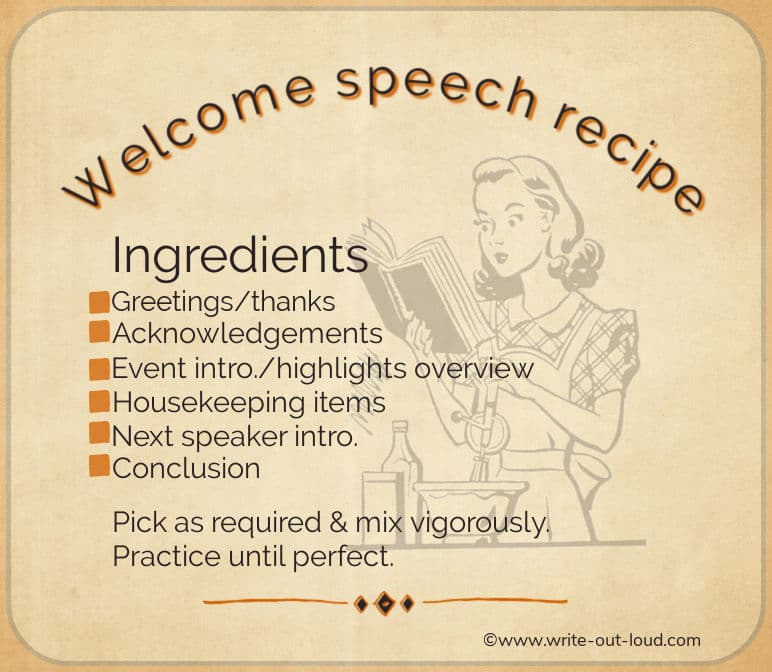
There are six common or standard content items in a good welcome speech.
- Greetings to welcome everyone and thanking them for coming along.
- Acknowledgement of special guests, if there are any.
- An introduction of the event itself and a brief overview of special highlights the audience will want to know about.
- Any important housekeeping information, for instance: where the bathrooms are, where lunch will be served and when...
- An introduction for the next speaker, if there is one.
- Thanking everyone for coming once more and then concluding having made everybody feel at ease, eagerly anticipating what is to come.
Numbers 1, 3, and 6 are basic essentials you cannot do without. Numbers 2, 4 and 5 may, or may not, be applicable. Pick what you need from them to fit your occasion.
Short sample welcome speech for a conference
Now let's put all six ingredients into an example of a short welcome speech to open a conference that you can adapt for your own speech.
* (This speech is pure fiction! I made it up to show you how it's done. You'll see its tone is formal rather than informal to fit the occasion. I don't think there is a group called Parents United. However, there are others with a similar mission: 10 Inspiring Organizations that Promote Literacy and Education .)
Example welcome speech - "Readers by Right"
"Sue-Ellen Thomas, Jim Smith, Jane Brown and all of our guests, good morning!
My name is April Molloy, and it's my privilege and great pleasure on behalf of Parents United to welcome you all here today.
We are delighted to have you with us to participate and share in this special occasion, our 5th annual Children's Day Conference. Thank you for coming. That many of you have willingly traveled long distances to be here serves as a reminder to us all just how important our work is.

Parents United is committed to actively raising the quality of life for every child. We want all children, regardless of race, creed or circumstance to achieve their full potential. Our task is to make it possible. Our mission is to provide practical, step by step assistance.
This year our theme is literacy. We've named the day 'Readers by Right'.
Thanks to the 1948 United Nations Universal Declaration of Human Rights, we are aware of 'rights' in many spheres, including education. Article 26 declared it should be compulsory and free for children.
That goal is as pertinent today as it was then. And it's a goal I know we all share - the full development of every child. As a body, Parents United recognizes good reading skills established in childhood as the foundation of fulfilling, and ongoing education.

We are honored to have Sue-Ellen Thomas, Jim Smith and Jane Brown with us today. All three are esteemed specialists in teaching young children to read.
Sue-Ellen has worked for a long time with educational authorities to establish programs putting in place necessary pre-reading skills. Her hard work needs no introduction. The results speak for themselves.
Jim and Jane bring their passion, and knowledge of how to reach those in our communities who are frequently overlooked or bypassed. Their work among disadvantaged English-as-a-second-language families has bridged gaps that were deep dark chasms.
Prepare yourself to be challenged, excited and inspired.
And before I handover to Lesley Watts, our coordinator for 'Readers by Right', who will outline the day's various events, I want to say once more on behalf of the Parents United organizing committee, welcome. It's wonderful to see so many of you here."
Get your welcome speech started
To shortcut wondering, "Should I say this?" or "Maybe I should say that?" and "Then again there's also ...", I have a very simple solution for you.
Get yourself a printable welcome speech planner
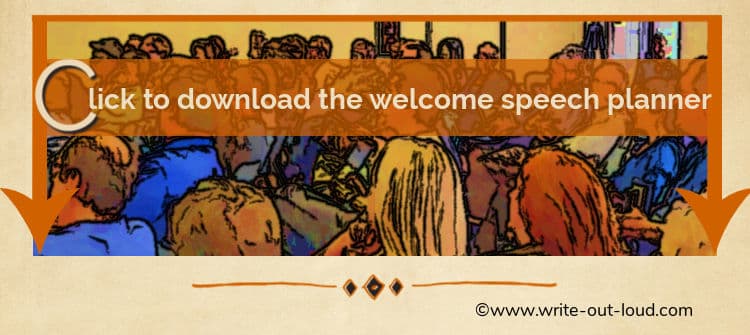
Download and print my special greeting address planner .
It covers ALL the necessary ingredients that go into preparing a successful welcome speech. It's simple to use and easily filled out. Once it's done, writing your speech will be a lot less hassle as you'll have the core content ready to work with.
Writing your welcome speech
Tips to help you get your speech right.
When you're entering information into your speech planner:
- ensure you've got all the names of individuals or special guests you need to mention specifically and, that you know how to pronounce each of them. Also check that you know and use their preferred pronouns: them/they, she/her, he/him...
- double check the remarks you're going to make about them, or anything else, are factually correct.
Use your introduction of your guests/or the event, as a "teaser" for what is going to come. It will help create anticipation in the audience. Don't ruin it by giving too much away! Just enough to tempt and no more.
Keep it brief. One to two minutes is generally sufficient.
(The word count of my sample welcome speech is 357. It will take approximately 2 minutes to say .)
Use the S-S-S formula for success: Short, Simple and Sincere. Your listeners will appreciate it.
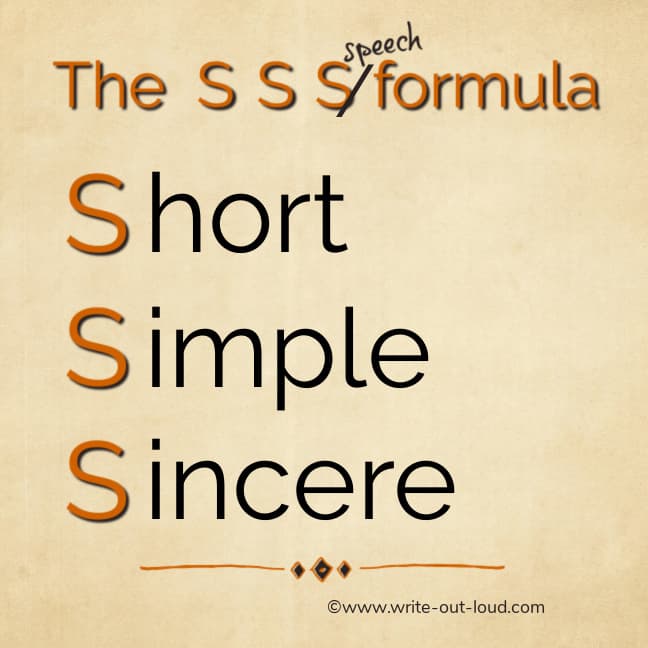
Get a printable welcome speech outline
If you would like to use and adapt the structure I used in my sample speech as the foundation for your welcome speech, click the link to download the printable: welcome speech outline .
Then edit; delete, amend and add, until you are done.
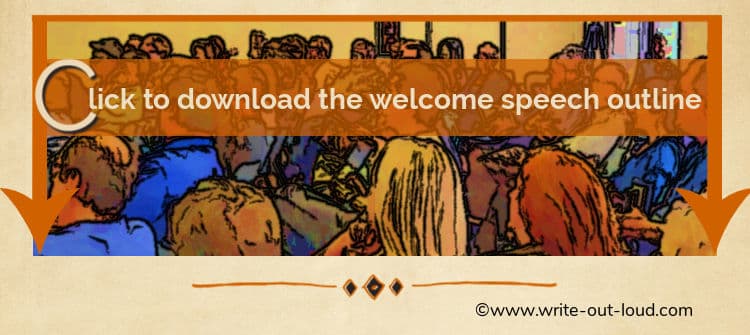
Get a hand with vocabulary
If you're stuck for words, here's a large selection of adaptable welcoming phrases with example s entences. Reading through them could help you to find exactly what you want.
What does a good welcome speech do?
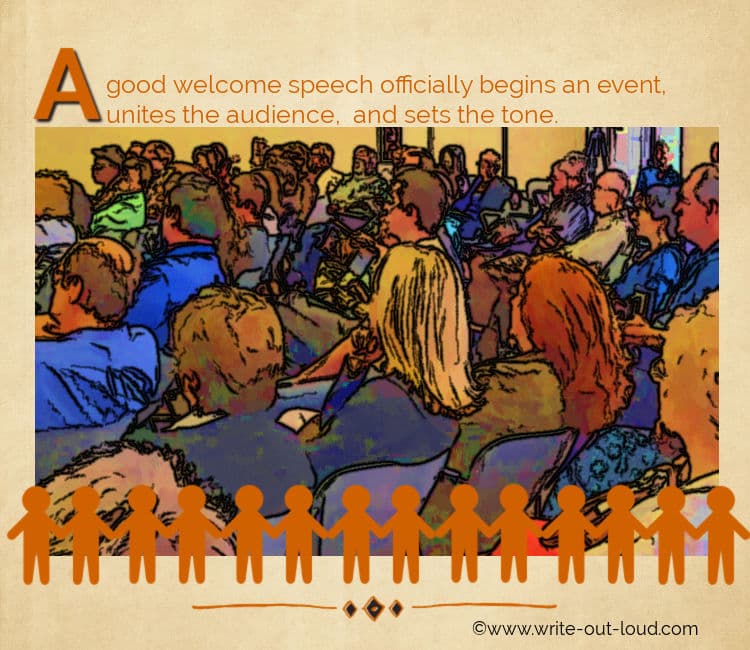
An effective welcome speech has three important functions. It:
- signals the official beginning of an event . It says to the audience, hush, sit down, stop talking and listen. What you came for is starting!
- sets the tone for the occasion through the choice of language used . For example, using light-hearted and informal words to welcome guests to a dear friend's birthday party may be completely appropriate. However, the same type of language to welcome family and friends to a memorial service is unlikely to be. In that setting, people generally expect a more solemn and formal word choice. They could be deeply offended and think the use of casual language is disrespectful. Understanding and getting tone right is a key element in the overall success of your welcome speech.
- unites the audience . It draws everyone together in the common purpose at the heart of the occasion. For example, at a birthday party, the welcome speech invites everyone to join in celebrating the person whose birthday it is. The welcome speech opening a specialist conference will affirm its principal purpose: the coming together of people with mutual interests to meet and share new knowledge. Or if a welcome speech is given to newcomers in a workplace, club or educational setting, its purpose is to give an introductory overview of how things work to help them feel more at ease in their new situation - to help them develop a sense of belonging.
Getting the tone right for an event
What is tone.
Tone is the combined impact of the words chosen to express something, with how they are structured and, delivered. All three elements come together to create tone * .
Get tone wrong, and your welcome speech is a disaster.
Get it right, and it's a triumph!
(Yes, that's hyperbole but I'm sure you get the idea. ☺)
* Tone - a mood, quality or feeling
How to choose the right words
The beginning of getting tone right is to think about your audience and the event itself. Your goal is to unite and bring them together in the main purpose at the core of the occasion. What type of language will do that most appropriately and easily?
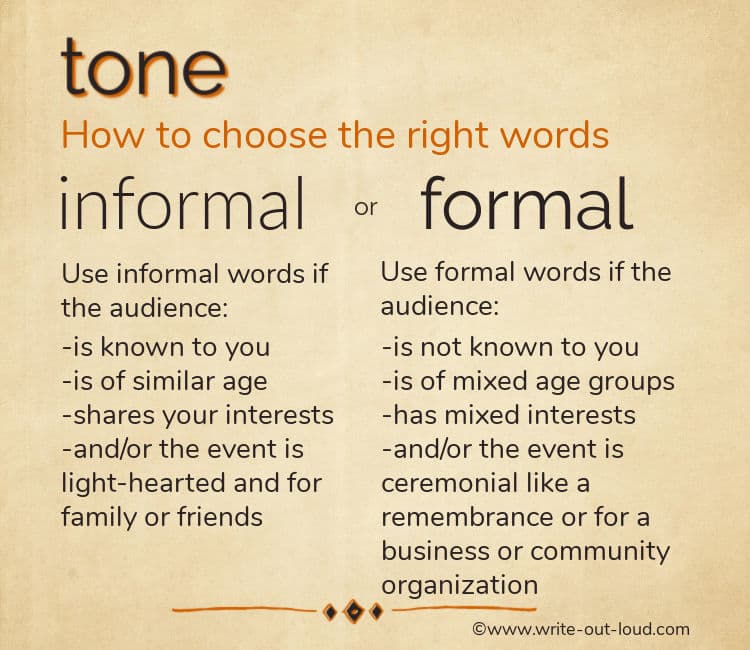
To answer that question, think about the common interest everybody shares - the principal reason behind them getting together. It will help guide your language choice.
Is it a fun event like a birthday party for close friends and family? If so, then informal language is likely to be the most apt.
You might hear something along the lines of: "Well, here we all are! The big day has finally arrived. Jean-Marie is 50! Half a century! How on earth did that happen?"
If it's a remembrance service for someone who has recently died, the language you're likely to hear is more formal.
For example: "Friends, family, colleagues, thank you for joining us today to celebrate and give thanks for our dear Jean-Marie. Your presence is gratefully appreciated."
What is appropriate? What is expected? Do spend some time thinking tone through. Misunderstanding and getting it wrong can be very embarrassing for everyone. If in doubt, ask someone whose opinion you trust.
Related helpful pages
Help rehearsing your welcome speech.
Get step by step instructions on how to rehearse including how to make and use cue cards.
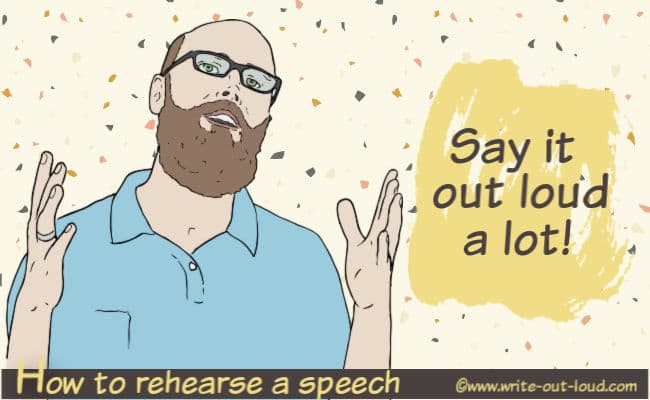
And please do rehearse. It makes a huge difference! You'll sound, and look better. Taking the time to rehearse shows respect for yourself, the audience and the event. Truly.
Help to manage pre-speech jitters
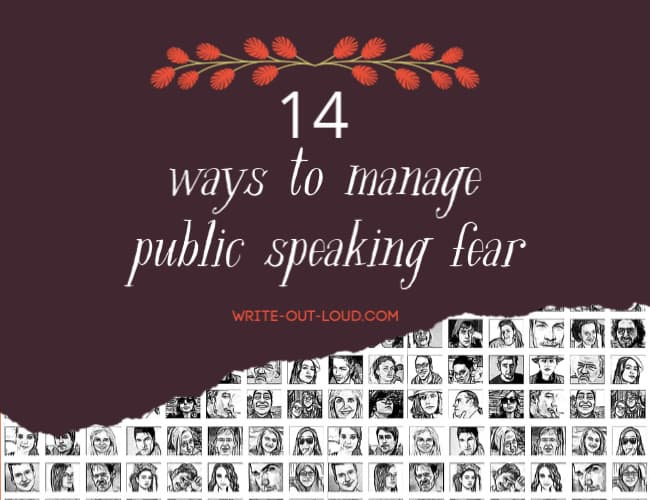
Nervous? If you're shaking in your boots at the thought of having to speak in front of an audience, click overcoming public speaking fear for assistance. Take your time. The page has 14 tried and tested suggestions to consider.
Help with other types of welcome speeches
Or perhaps you need welcome to the family speeches or a church welcome speech sample ? Click the links to find easily adaptable examples.
speaking out loud
Subscribe for FREE weekly alerts about what's new For more see speaking out loud

Top 10 popular pages
- Demonstration speech topics
- Impromptu speech topic cards
- Thank you quotes
- Impromptu public speaking topics
- Farewell speeches
- Phrases for welcome speeches
- Student council speeches
- Free sample eulogies
From fear to fun in 28 ways
A complete one stop resource to scuttle fear in the best of all possible ways - with laughter.

Useful pages
- Search this site
- About me & Contact
- Blogging Aloud
- Free e-course
- Privacy policy
©Copyright 2006-24 www.write-out-loud.com
Designed and built by Clickstream Designs
- PRO Courses Guides New Tech Help Pro Expert Videos About wikiHow Pro Upgrade Sign In
- EDIT Edit this Article
- EXPLORE Tech Help Pro About Us Random Article Quizzes Request a New Article Community Dashboard This Or That Game Popular Categories Arts and Entertainment Artwork Books Movies Computers and Electronics Computers Phone Skills Technology Hacks Health Men's Health Mental Health Women's Health Relationships Dating Love Relationship Issues Hobbies and Crafts Crafts Drawing Games Education & Communication Communication Skills Personal Development Studying Personal Care and Style Fashion Hair Care Personal Hygiene Youth Personal Care School Stuff Dating All Categories Arts and Entertainment Finance and Business Home and Garden Relationship Quizzes Cars & Other Vehicles Food and Entertaining Personal Care and Style Sports and Fitness Computers and Electronics Health Pets and Animals Travel Education & Communication Hobbies and Crafts Philosophy and Religion Work World Family Life Holidays and Traditions Relationships Youth
- Browse Articles
- Learn Something New
- Quizzes Hot
- This Or That Game New
- Train Your Brain
- Explore More
- Support wikiHow
- About wikiHow
- Log in / Sign up
- Education and Communications
- Communication Skills
- Public Speaking
- Speechwriting
How to Write a Welcome Speech
Last Updated: July 29, 2023 Fact Checked
This article was co-authored by Patrick Muñoz . Patrick is an internationally recognized Voice & Speech Coach, focusing on public speaking, vocal power, accent and dialects, accent reduction, voiceover, acting and speech therapy. He has worked with clients such as Penelope Cruz, Eva Longoria, and Roselyn Sanchez. He was voted LA's Favorite Voice and Dialect Coach by BACKSTAGE, is the voice and speech coach for Disney and Turner Classic Movies, and is a member of Voice and Speech Trainers Association. This article has been fact-checked, ensuring the accuracy of any cited facts and confirming the authority of its sources. This article has been viewed 1,624,910 times.
Are you on welcome speech duty for an upcoming program or event? You’ve got nothing to worry about—with the right format and tone, it’s super easy to write and present a welcome speech for just about any occasion. We’ve outlined everything you need to know, from your opening greetings and acknowledgments, to establishing the right tone and nailing your closing remarks. You’ve got this in the bag!
Greeting the Audience

- Keep the tone more serious if it's an important occasion. Use more formal language and don't crack any inappropriate jokes. For example, at a wake, you might say, "We're so glad to have you all here tonight. We appreciate your presence at this difficult time."

- For an event with close friends and family, more informal language might be appropriate. Include a few jokes and keep your speech more lighthearted.
Patrick Muñoz
Grab your audience's attention with a strong opening. Start with a loud voice and a strong presence that welcomes everyone and gets them involved. Ask a question they can respond to or tell a joke — anything to connect with the audience. Do something that grabs their attention and excites them and makes them thrilled about the event.

- Special guests include any people of honor, those that may play a particularly important part in the event, or those who have traveled a long way to be there.
- Make sure that you practice all of names, titles, and pronunciations of the special guests before your speech.
- For example you could say, "We'd like to extend a special welcome to our guest of honor, Judge McHenry, who will be speaking later tonight."
- Alternatively to welcome a group of people you might say, "While we're excited to have you all here tonight, we'd especially like to say welcome to the students from Johnson Middle School."

- For an informal event such as a birthday party, you could say, "We're so happy to have you here tonight to eat, drink, and celebrate another year of Jessica's life. Now, let's get to it."
- For a more formal event such as one run by an organisation, you could say, “We are so excited to have you all here to participate in our 10th annual pet’s day, organised by the Animal Rescue Group.”
Forming the Body of the Speech

- An example of acknowledging individual people is saying, “We couldn’t have pulled off this fundraiser without the hard work and dedication of Grace and Sally, who worked tirelessly from day 1 to make today a reality.”
- Avoid reading off a long list of people or sponsors, as your audience will begin to get bored. Stick to just a handful of highlights.

- For instance, at a conference, you might point out when the dinner will be held, or where particular sessions will take place.
- At a wedding reception, you might note when dancing will start or when the cake will be served.

- Alternatively, you could end the body of your speech during an informal gathering by saying, “I can't wait to see you all out on the dancefloor!”
Ending the Speech

- You could also say that you hope that the audience takes something away from the event. For example, “I hope that today inspires ideas and discussions around the ways that we can make our city a better place!”

- At a formal event, you might say, "Now, for our speaker. Rebecca Roberts comes here from Montreal, Canada, and she is a leading expert in the study of the human brain. She'll be speaking tonight on what drives humans to make decisions. Let's welcome her."
- For a more informal event such as a party, you could say, “Next up is Sam, who has been Kyle’s best friend for 10 years strong. He has a decade of embarrassing stories about Kyle to share with us tonight!"

- Alternatively you might say, “Thank you again to everyone for being here tonight to celebrate Joe and Kathleen’s 50th wedding anniversary! Let the celebrations begin!”

- If you are unsure, ask the organiser or host what an appropriate length of time for your speech will be.
Writing Help

Community Q&A

- Practice your speech in front of trusted friends and family in the days leading up to the event. [12] X Research source Thanks Helpful 2 Not Helpful 1

You Might Also Like

- ↑ https://www.yourdictionary.com/articles/effective-welcome-speech
- ↑ https://www.examples.com/education/speech/welcome-speech-for-conference.html
- ↑ https://penandthepad.com/how-5574707-write-welcome-speech.html
- ↑ https://penandthepad.com/write-after-dinner-speech-8035341.html
- ↑ https://uark.pressbooks.pub/speaking/chapter/closing-a-speech/
- ↑ https://www.unr.edu/writing-speaking-center/student-resources/writing-speaking-resources/speech-delivery
About This Article

To write a welcome speech, start with a greeting to your audience that’s appropriate to the situation. For example, you could try “Good evening ladies and gentlemen” if you’re introducing a formal event, or “Thank you everyone for coming on this sunny day” for a more relaxed occasion. After you’ve finished the greeting, introduce the event by talking about who organized it and what its purpose is. In the main body of your speech, acknowledge 2 or 3 people who played important parts in organizing the event. You should also emphasize special parts of the event that people should pay attention to, such as where dinner will be or where a conference session will take place. When you’re ready to conclude your speech, tell the audience to enjoy the event by saying something like “I hope you all enjoy the exciting speakers to come.” Finish your speech by thanking the audience for attending. For tips on how to introduce people at a special occasion, read on! Did this summary help you? Yes No
- Send fan mail to authors
Reader Success Stories
Did this article help you?

Gokul Shriram
Nov 17, 2019
Apr 8, 2022
Adefisayo Adeyemi
Sep 24, 2021
Johnson Kisero
Jan 29, 2019

Featured Articles

Trending Articles

Watch Articles

- Terms of Use
- Privacy Policy
- Do Not Sell or Share My Info
- Not Selling Info
wikiHow Tech Help Pro:
Develop the tech skills you need for work and life
- Skip to primary navigation
- Skip to main content
- Skip to footer
Tress Academic

#26: First conference presentation? 17 life-saving tips
October 8, 2019 by Tress Academic
Is it the first time you are presenting at a scientific conference? First time you’re traveling to an academic meeting, probably abroad, and talking about your research in front of a crowd of people you don’t know? Feeling a bit scared and intimidated? Did you get nervous when you looked in the calendar and realised it’s only six weeks away? Feel like you don’t know how you’re going to deal with the pressure? Don’t worry, you are not alone on the academic ocean! Let this post will be your life jacket and we’ll make sure you are prepared for the big day.
In our experience, we didn’t have a choice about giving our first conference presentation. Our supervisors approached us during our PhD studies and suggested we should go to this particular conference and present what we are doing. Huh? We had never done this before, although we had attended a few conferences already where we presented posters. Giving a poster presentation is the classical way of how young researchers get acquainted with conferences (for suggestions on how to do this properly, check our blog post #15: 5 smart strategies to get most out of conference posters” ).
However, going on a conference and presenting a paper is another story all together! Of course, we had attended sessions where others had presented their work, but this is like taking a comfortable backseat compared to the driver. You lean back in the massive audience and enjoy what the presenter is telling you. Attending is a pretty anonymous thing, plus we didn’t have to do anything. Not so when you are the presenter! Then you have to stand out there in front of all these famous, well-respected and highly-experienced scientists, who know so much more than you do, and are much better at doing research and presenting. This is almost guaranteed to be embarrassing! What if they laugh at our talks and rip them into pieces when they ask questions?
Do these fears sound familiar to you when you think about your first research presentation at an academic conference? We know they do, so let’s give you two reasons why you should not worry too much about this first presentation:
- Established researchers will not sit in your audience and laugh at your presentation, because this is not how academic conferences work. This is also not how professional researchers conduct themselves. Good scholars, and our academic communities are full of them, are kind and gracious listeners to presentations made by junior faculty. They (hopefully) all remember their first presentations very well and the feelings that come with them. It was never an easy or comfortable task to present as a beginner in front of strangers.
- Of course, you might still be afraid that not everybody listening to you will fall into the respectful audience category we just described above. Don’t worry, in this case we’ve got you covered with our 17 life-saving tips!
By the way, both of our first presentations went very well. They were probably not spectacular, but they left us with no negative memories and as far as we can recall, no negative impression on the audience. We had no instructions on how to do these talks at all. We were literally sent off to deliver the talks blind, like good academic soldiers marching into battle. You deserve better!

We’ve prepared a list of 17 life-saving tips we want you to keep in mind when preparing and presenting for the first time. Caution: This list of actions will NOT immediately lift you up to the pro level. It is not a crash course in delivering the best presentation you could ever do with all the possible bells and whistles . No, we intend it to get you safely and comfortably through the ‘stormy waters’ of this first-time-experience so that you, as well your audience, will enjoy it. There are plenty of measures you can take to improve your talk on top of this, but let’s take it one step at a time. If you are totally new to your PhD project, we recently published a post to help you tackle this larger project with: “#24: New to the PhD – 5 tips for a great start!” .
Nevertheless, try out some of our 17 life-saving tips and you will be well-equipped for the rough winds that sometimes come up in academia:
Life-saver #1: Know what your message is
The best presenter and presentation techniques cannot help if the message is not clear. What is it exactly that you want to communicate in your talk? Start preparing by writing down the key message that you want to communicate on a sheet of paper. It should be a message that is easily understood and that you could easily talk about on any occasion.
Life-saver #2: Guide audience through structure
Take your presentation message, sit down, and think about the order of elements someone would need to describe to the audience for them to understand it. Typically, you start with a short intro about yourself, the topic and the specific research question that you addressed. Then, you follow with what you did and what you have found. Towards the end, you state your key message that you want the audience to remember. Probably, you also want to point out some of the open questions that resulted from your work. Make sure you have a clear beginning and a clear ending.
Life-saver #3: Don’t start on the computer
Start drafting the key message, the structure, and the details of your talk on a sheet of paper, or better yet, with a set of sticky notes. This is far more flexible and effective than starting on Powerpoint or similar software and filling in slides right away. You will put to much (irrelevant) content and effort into the slides. Get involved with slide ware only once you know exactly what will be part of your presentation, not before. The art of slide making is not to fill them quickly but to leave things out and reduce to what is absolutely essential.
Life-saver #4: Reduce and enlarge text
It is not helpful to present a lot of text on slides. Reduce it to a minimum, i.e. a few keywords on slides and learn the rest by heart so you can present it fluently. Put the text in a large font size, usually much larger than you think necessary. If you end up with slides that contain only a few words in large text size – nobody will be unhappy, because it is easier to follow.
Life-saver #5: Communicate visually
A lot of communication in science is in written form, but presentations have the benefit of adding visual aids. So, once you know what your key message is, can you come up with a set of 3-5 key images (photos, figures, graphs) that would help you to get the message across even better? There is nothing non-scientific about using images in a talk, because they help to convey your scientific message better and are more memorable than text. If you are not sure where to find good visuals, check out our blog posts #19: The 5 best free photo databases for your scientific presentations or #20: Best scientific photo databases” .
Life-saver #6: Rehearse your presentation
Rehearsing is all about reducing many of the fears that we have towards giving a talk. We recommend you rehearse multiple rounds, and do read throughs at least 10+ times for your talk. You will become more fluent and confident in what you present once you know it backwards and forwards. For tips on how to rehearse effectively, see our post #127: How to rehearse a scientific presentation.
Life-saver #7: Check the length of your presentation
Going over time is a common occurrence at conferences, but also a commonly condemned behaviour. Use a watch to check how long your presentation is. Start checking your time once you have some fluency in your delivery, so only after a couple of rehearsal rounds. If your talk is too long, cut something out. Only you will miss it.
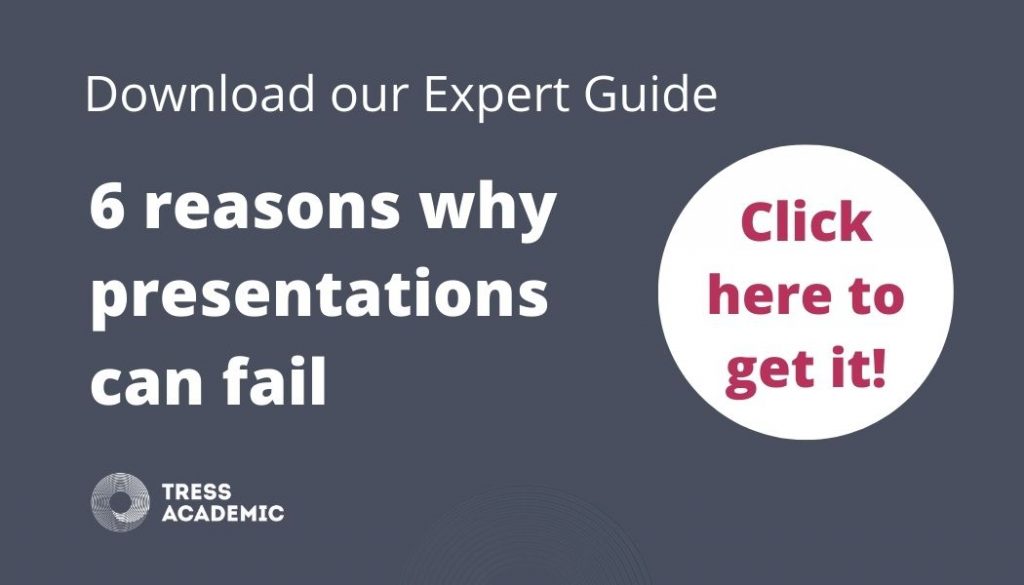
Life-saver #8: Get somebody to listen to you
All the rehearsal in the world cannot help if you do not rehearse realistically, i.e. in front of other people. Find a colleague, a couple of PhD fellows, or some friends and deliver your test presentation to them. It will make you feel differently and this can really help you trouble-shoot the talk. Ask them for honest feedback and their suggestions afterwards. Since you’re presenting to other people at the conference, why not try it in the preparation phase?
Life-saver #9: Rehearse outside your comfort zone
If possible, try to also rehearse your talk in a room or a space which is different from where you usually are at your institute. It could be an empty classroom or lecture hall. This will already give you a feeling of how different it is to present in a room you are not familiar with in the preparation phase, which will be the case for your conference talk.
Life-saver #10: Anticipate questions from the audience
Many presenters fear the question that come from the audience after their talk more than the presentation itself. Prepare yourself: What potential questions could the audience ask? Think about good but short answers to them while still preparing your talk. We prepared a great overview of questions that you should always expect and have an answer in our post #30: Questions from the audience you should be prepared to answer.
Life-saver #11: Keep technology simple
Unless you are a well-versed user of presentation technology and gadgets, keep it simple for your first talk. Of course, there is a multitude of multi-media elements that you could employ, but the audience comes to hear something about your research and if you can do this without a heavy tech component, you take a heavy load off your shoulders. There’s nothing worse than a technological fail in front of a room of people you want to impress.
Life-saver #12: Prepare a backup strategy
Think about the what-ifs: If … your presentation does not work on the presenter laptop or if you realise you would need more time than allocated or if … whatever. Always have a digital and a paper copy of your presentation with you. The paper version could be annotated with coloured markers so you could use it if the technology fails. Rest assured: The vast majority of ifs very seldom happen, but it’s always better to be prepared!
Life-saver #13: Be at the venue in good time
You don’t want to rush in just before giving your talk, this would only increase your nervousness. If you have to travel to the conference, always arrive one day before the conference starts (or at least before your talk is on) at the venue. On the day of your talk, be at the venue in good time prior to your scheduled talk. You might have to deliver earlier because a talk that was supposed to come before yours was cancelled.
Life-saver #14: Check the room & equipment
Conference rooms and halls have a special atmosphere that can rub off on presenters. Checking out the exact room where you have to present will help you to get accustomed to the special set up of the room: How is the audience seated? Where is the presenter desk? How large is the room? … All these things impact you during your talk. Check it out the day before or at least an hour before your talk, and it will help you to cope with any of its particularities. Also, don’t forget to test your presentation file in the room – whether from your own or from a presenter laptop. Does your presentation display well?

Life-saver #15: Address the audience
At the beginning of your talk, welcome the audience and tell them how grateful you are they are all here to listen to you. Introduce yourself very briefly, unless a chair person has done so already (if so, thank the chair for the nice introduction). Address the audience again at the end of your talk and offer to answer questions.
Life-saver #16: Have a buddy in the audience
Being entirely on your own for your first conference talk can be difficult. Are you the only one from your institute or are there others? If possible, find a buddy to share the experience with, somebody who feels for you and supports you. Get this person into the audience, somewhere where you can see him or her. It will help a lot!
Life-saver #17: Get rid of the sticking point
Think about how you feel when you listen to presentations of other people. Is there one thing that comes to your mind where you say, this is what I would avoid doing at all costs? What is it? Write it down. Now, think about your own talk. How could you avoid this from cropping up? Implement the change and be happy that you removed the key problem that you have identified in other talks.
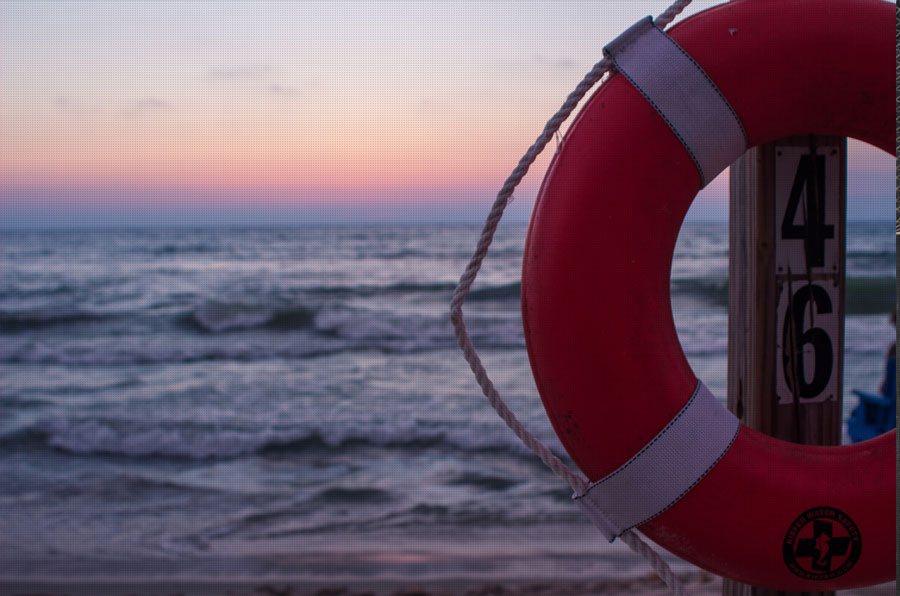
Your first presentation is a special thing! It is like going on your first long journey, or going abroad, all on your own, with just enough money to make it, and with many doubts and fears about what could happen, but also with many great expectations of how wonderful this trip could be! Like a first journey, a first presentation should be something to celebrate (or at least close to that), something you would like to, and most likely will do, again and again.
The first presentation is a unique experience. It’s a right of passage that all researchers go through at some stage. Whether it’s your own motivation that brings you to a conference presentation, or a supervisor encourages you to go for it, it’s a great thing to do. For the first time, you”ll actively interact with your academic peers from all over the country or even world! You speak and they will listen- wow!
Nerves play a vital role in this process, as we know. But if you think they are getting the best of you, check our post #3: “How to cope with stage fright?” , which will gives more advice on how to prepare yourself against unproductive anxiety. When you manage to follow the steps we’ve outlined above, you can rest assured, it will be a fine presentation. We wish we could have had such a life-saving list back then!
Relevant resources:
- Smart Academics Blog #3: How to cope with stage fright?
- Smart Academics Blogt #7: Why your next presentation matters
- Smart Academics Blog #11: How much time is needed to prepare a good presentation?
- Smart Academics Blog #15: 5 smart strategies to get most out of conference posters
- Smart Academics Blog #19: The 5 best free photo databases for your scientific presentation
- Smart Academics Blog #20: Best scientific photo databases
- Smart Academics Blog #24: New to the PhD – 5 tips for a great start!
- Smart Academics Blog #30: Questions from the audience you should be prepared to answer
- Smart Academics Blog #95: Apply these 5 tips to improve any presentation
- Smart Academics Blog #127: How to rehearse a scientific presentation.
Relevant courses and services:
- 1-day course: Presenting successfully at virtual conferences
- 3-day course: How to present at international conferences
- 1-to-1 advice: Presentation Check
More information:
Do you want to present successfully at conferences? If so, please sign up to receive our free guides.
Photos by Jonas Kohl, Ian Wagg and Jared Berg on Unsplash.com .
© 2019 Tress Academic
#FirstPresentation, #FirstConference, #ScientificPresentation, #ScientificConference

How to Speak at a Conference: 10 Tips to Become a Successful Speaker

You may be a successful leader or a thorough professional, but conquering the art of public speaking at a conference is a whole different ball game. With adequate preparation, you can turn your fear of public speaking into an excellent opportunity to showcase your subject knowledge, experiences, and brand journey.
Public speaking skills improve with time, keeping a few tricks and tips in mind. If you are preparing for your first speech or are a seasoned speaker and wondering how to go about it, don’t worry. We at Eventible have made a list of 10 sure-shot practices for improving how to speak at a conference. So, without further ado, let’s get started.
10 Speaking Tips on How to Speak at a Conference
To become a great speaker, one must develop definite skills. Let’s look at the following tips to boost your confidence and improve your communication skills.
1. Understand the Audience
Knowing your audience will help you prepare your speech accordingly. We have a few specific steps that will help you understand your audience.
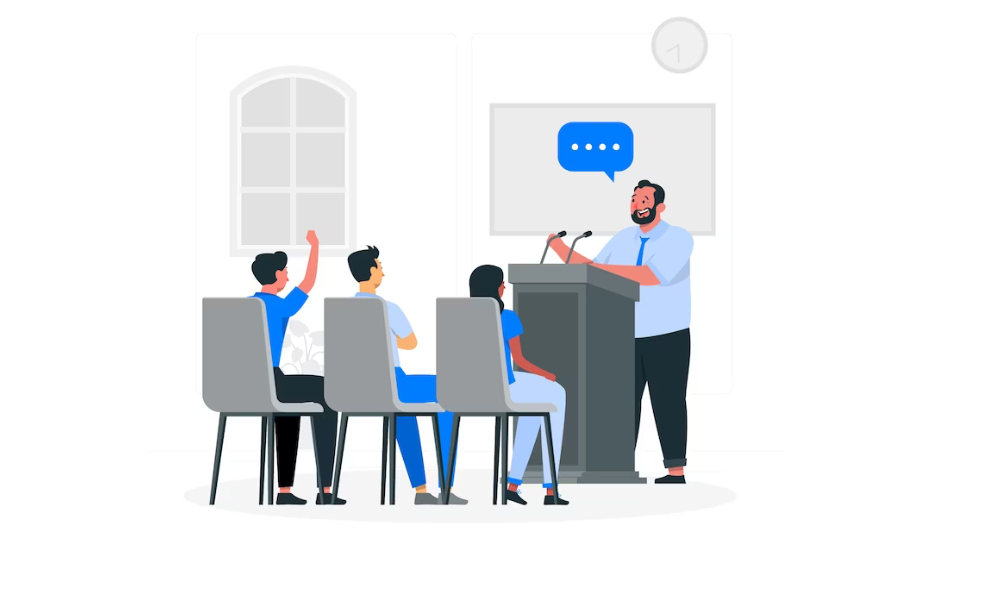
To get to know your audience, spend some extra time learning about them before a major conference. Make an effort to interact with your audience during tea breaks or break-out sessions ahead of your speech. It will help you calm your nerves and feel more confident. It may also help you alter your session or emphasize specific points that resonate with the audience. Additionally, it enables you to build networking or business connections for the foreseeable future.
- Categorize your audience into executives, end-users, experts, technicians, and laypeople. Determine your audience’s category and alter the conference presentation style accordingly.
- Additionally, being mindful of your speech is crucial since it determines people’s perceptions of you. Speaking at conferences is a great way to establish your reputation as a thoughtful leader. You would want to leave an impression on your audience. For that alone, try not to demean them to raise your standards.
- Be polite in your conduct and demeanor. When you take the time to interact with your audience, you get to know demography, which again influences your speech and presentation.
- Once you know them better, it will help you pay attention to things that you may have otherwise ignored before, such as language (whether to keep it formal or semi-formal), use of presentations (an older and more formal crowd would appreciate a PPT presentation but a younger audience may like anecdotes).
- Most conferences require speakers to travel. When they begin their speech with idioms and phrases in the audience’s native language, it could help them create a bond and connection in the future.
- You can review local newspapers, TV channels, magazines, and pamphlets to understand the audience’s pulse. The more you learn about your event audience, the better equipped you will be in writing for diverse conference attendees. Ensure you don’t hurt any sentiments in your tryst to ease conversation or build a connection.
2. Plan well in advance
To become a speaker, you must submit a proposal. Because they know these individuals can be conference drawcards, many conference organizers deliberately reach out to industry leaders with a more significant social media following.
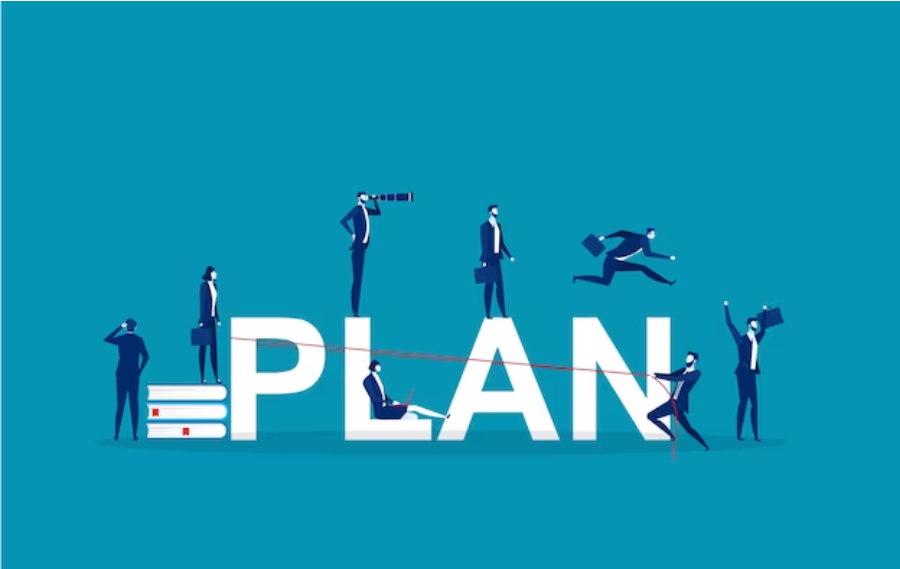
Let the event organizers know early on that you can stand out from the sea of speaker applications since some event organizers publish their conferences all year. Know who selects speakers, and go niche for larger conferences if you need excellent credentials or backing.
Everyone hopes for a glitch-free conference, but some hurdles are inevitable. Last-minute changes such as getting stuck in traffic, bad weather, annoyed sponsors, and other emergencies may leave you stressed. That’s why planning well in advance is wise to mitigate such issues.
- · Choose the earliest session for a conference talk
- · Share your insightful topic with the conference organizers
- · Avoid post-lunch slots, as the conference attendees usually feel lethargic.
- · Avoid the end session because people rush to head back home.
The advantages of planning are:
i) Hassle-free: You do not have to worry about last-minute random changes. You will remain stress-free and can devote time to preparing for the conference.
ii) Liberty to Choose: If you are one of the early birds to book a speaking slot from multiple options, you can choose the one that suits you best.
iii) Virtual Conference: If you’re presenting at a virtual conference, practice using video management and audio recording systems beforehand.
3. Research your Topic Thoroughly
A good speaker requires a good script, which is possible only when you have researched thoroughly. The speaker should explore the subject in-depth. Research is like decoding a mystery.

Firstly, get acquainted with your subject from the beginning to the end. Check out the types of research below: Here are some tips to remember while delivering a speech at a conference:
i) Audience-centric Research: Remember that your speech is not about self-promotion. Your goal is to persuade, educate, or inspire your audience.
ii) Avoid Acronyms or Jargon: only use acronyms or jargon if the audience knows the words.
iii) Acknowledge Sources: Acknowledging your sources is essential. As it is ethical and helps you win your audience’s trust. The more you research the topic, the more you can deliver at the conference. It will help you answer tricky questions asked by the audience. Such challenges will help shape you into a brand value and eventually train you on how to speak at a conference.
4. Be Audible and Clear
Your efforts will only be worthwhile if your speech is audible and clear to the audience. You, as a speaker, should be confident, distinct, and transparent while providing your content.
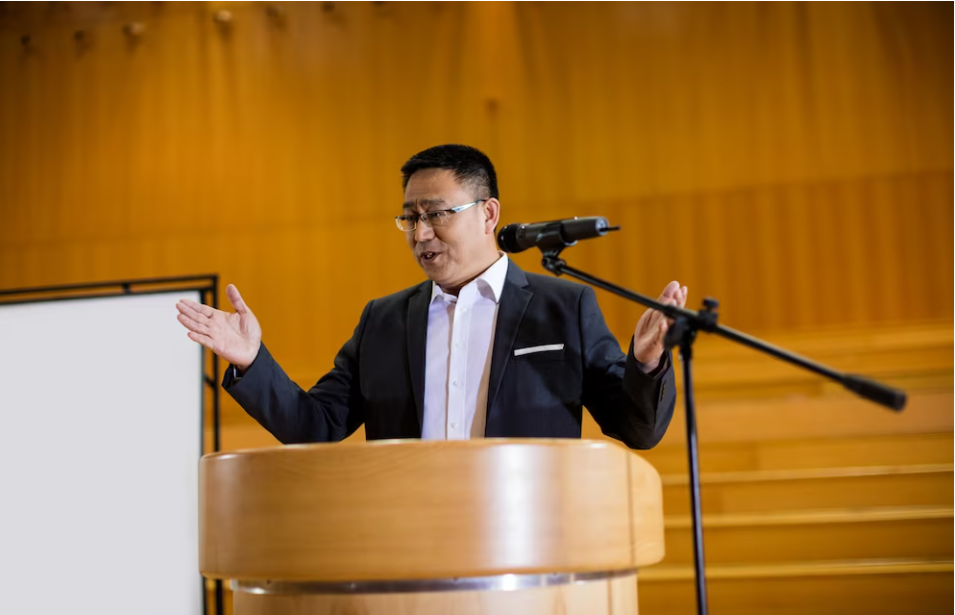
If you maintain a monotonous tone, it will become boring for people to stay and attend your session until the end. You can video-shoot your demo speech. It will help you understand more about sound modulation and body language. Before your conference, you can refrain from having anything cold or undertake voice modulation exercises/vocal exercises to avoid indiscretions.
5. Focus on the Right Attire
Choosing the right outfit is as important as writing your speech for a conference. Your appearance says a lot while speaking at a conference. So, ensure you dress up appropriately. Desirably presenting oneself encompasses selecting an appropriate attire and maintaining a well-kept appearance.

Consider pairing light with dark shades for a stylish look, and comb your hair into a tight bun or ponytail. Please read our article A Comprehensive Guide On What To Wear To A Conference For Men & Women to learn more about such tips.
What you wear goes a long way in building your first impression before the audience. Here are a few things to remember to ensure you’re on top of the game when creating first impressions.
- Be Welcoming: A warm, charming smile can comfort the audience and make you look like you have great moments. It will make you look friendly and approachable. Research suggests that smiling and laughing can help reduce blood pressure, stress, and anxiety and keep up a good heartbeat.
- Maintain an Upright Posture: Always project a proper posture. Do not physically close off by folding your arms. It displays hostile gestures. While talking, keep your arms at the side and lean slightly towards the person or people you are communicating with.
- Maintain Eye Contact: Do not stare at the floor or feet. Look towards the crowd. If your eyes meet with an audience member, acknowledge them with a smile or nod.
- Refrain from Fidgeting: It’s natural to feel nervous at a conference but don’t allow it to surface on your body/face. Shuffling back and forth, biting your nails, twirling your hair, and other forms of fidgeting will display your nervousness and lack of confidence. Please do not touch your face frequently because it’s a sign of anxiety. Avoid tapping your feet as it may reflect that you are bored or want to escape from the stage at the earliest.
- Emulate Another Person’s Style: Pay attention to other people’s gestures, posture, and stance and try to emulate them. The psychiatrist says that mirroring others’ body language helps build trust and establish a connection while speaking. After all, like we said earlier, how to speak at a conference is a skill that takes practice with time.
6. Make Your Presentation Interactive
The key to becoming a good speaker is to have an engaging script. Primarily, create a well-structured and audience-engaging script. You can refer to the internet to watch TED talks, world-class Business Leaders’ speeches, etc., to learn how to do it.
A key attribute to becoming a great speaker is to develop a fool-proof ability to engage the audience.

Keep your conference talk within a particular time limit, as exceeding the allotted time is unprofessional and unacceptable. Follow these steps for an interactive presentation:
- The first step is to create a thesis and a detailed outline.
- Create a strategy for the script.
- Based on the above, create a draft and rehearse it loudly.
- Take feedback from a professional and accordingly create a final draft.
- The more you try out, the more confident you will be on the day.
- Whether there is a podium or not, rehearse it wearing the attire you have decided for the day.
Points to remember before speaking at a conference:
- Don’t be nervous
- Rehearse out loud in front of the mirror.
- Gargle before the conference
- Take a pause and breathe deeply to expand your vocal range.
- Have eye contact with your audience
- Practice before a real audience, such as family, friends, or colleagues.
7. Use Visual Effects
Your slides should contain less text and more statistical data, graphs, pie diagrams, pictures, videos, examples, and generic case studies. Use Slide Share to prepare and present your presentation. Ensure that the PPT is light enough, as it’s your job to explain to the audience and not make them read it.
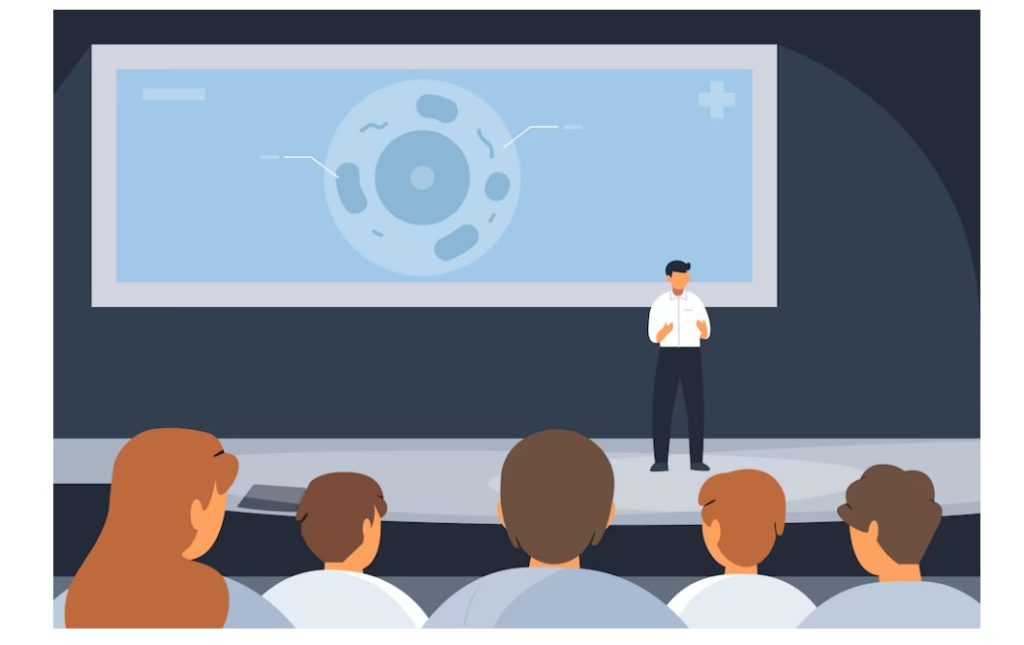
Your PowerPoint presentation should include the following:
- · Use simple and elegant templates.
- · Keep uniformity in position, colors, and styles.
- · Incorporate only necessary information.
- · Limit the information to essentials.
- · Content should be self-evident.
- · Use colors that contrast and complement.
- · Too many slides can lose your audience.
- · Keep the background consistent and subtle.
- · While illustrating facts or points, you can narrate personal anecdotes.
If you want to keep your audience engaged with your presentation, you need to make your presentation entertaining as well. If you can occasionally earn your audience’s smile or laugh, you know you have won the audience’s hearts. It will keep them hooked on your every word and action. Another significant aspect of how to speak at a conference is the choice of diction. Modulate the tone and speed of your speech wherever necessary. Be relaxed, and enjoy yourself while delivering the presentation; it will make your audience naturally enjoy the experience.
8. Ask for Written and Oral Feedback
Constructive feedback plays a crucial role in improving one’s skills; the rules are no different when speaking at a conference. It also helps one plan strategies for the future. Read our article on conference feedback. Conference Feedback: Why Is It Important & How To Collect It?
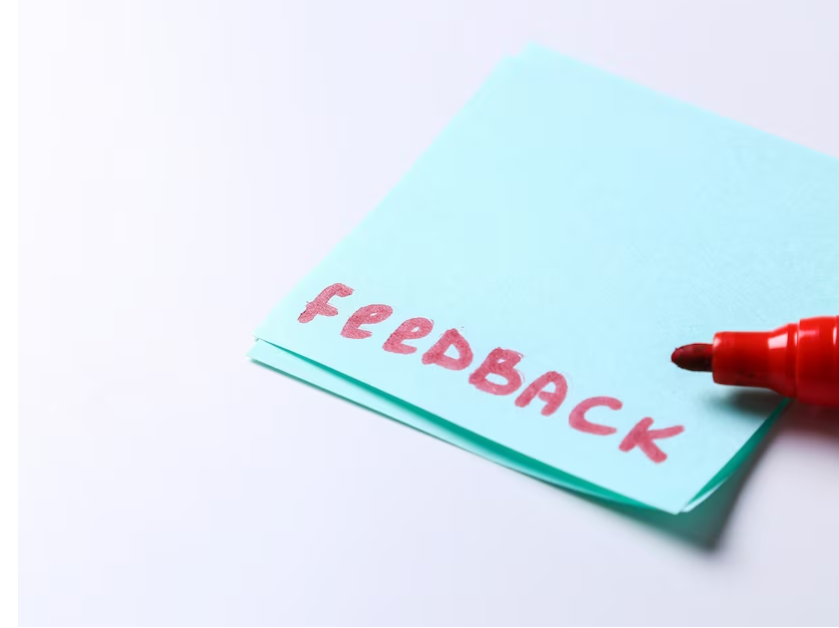
i) Collect feedback before a conference ends: Speaking at a conference can be a whirlwind experience. It will help you understand the background of your attendees on a deeper level. ii) Restrict the questions in your conference feedback form: long surveys can exhaust participants, often resulting in inaccurate data or incomplete responses. iii) Read out positive conference feedback: Create a space to celebrate your milestones and positive responses. It will boost your and your team’s motivation. iv) Insert Rating Question in feedback form: Rating questions help get more straightforward and precise feedback. The audience will likely respond to these questions as this consumes less time. You can read our articles, 27 Event Survey Questions For Maximum Responses, and Here’s How Pre-Event Survey Questions Can Improve Attendee Experience to know what questions to ask at the beginning and end of a conference/event to get an improved attendee experience the following years. Do not interrupt them while receiving oral feedback or input. Listen to what they say with an open mind and take notes to keep improving. If you receive feedback from someone younger than you, be humble and accept it with a smile. An engaging speaker encourages audience participation and projects their positive energy onto their audience.
9. Engage with Your Audience After your Session
Engagement with the audience after your session is an excellent opportunity to build relationships with them. Direct feedback, which will help improve your skills, or interaction with the audience could open up opportunities for future collaborations. You can consolidate conversations done after a presentation in the upcoming meetup.

You can follow up and maintain long-standing connections through social media such as LinkedIn, Twitter, etc. These platforms can act as great resources for building networks across the world. You could also request them to follow your business website and pages on different social media platforms. Post-conference local meetups help you to find out about future collaborations.
Pro Tip #1:
i) Try to be a good listener rather than a know-it-all.
ii) Do not try to dominate the conversation.
iii) Refrain from talking over what could have interested the other person, and think about what you can offer in return to that person.
iv) Accept negative criticism gracefully.
v) Refrain from convincing people about your work or what you stand for.
Such an act may give a wrong impression to your audience and lessen the chance of developing a relationship in the future. Pro Tip #2: Your conferences facilitate a greater understanding of current industry events, allowing industry professionals to network and form new relationships or even helping members earn micro-credentials to advance their professional development.
10. Publish Your Speech Online
The most important task after the success of your speech is to publish it on relevant social media platforms. It will likely increase its reach at a global level. Write a few lines on why and how publishing your work can help.

The platforms for publishing your conference talk are as follows:
- Slideshare.
- Hashnode Sponsors.
- Upload in the form of reels.
- Various business conference websites.
- Publish it in an academic journal or magazine.
Key Takeaway
Speaking at conferences is a skill that requires consistent practice and exposure to different speaking opportunities to refine and improve. It’s like any other skill that takes time and effort to develop. Attending events and conferences can be a great way to gain insight into what it takes to become a successful conference speaker. Additionally, you can challenge yourself by trying out new hacks or activities to improve your speaking abilities. Ultimately, the more speaking experience you gain and push yourself out of your comfort zone, the more you’ll develop as a conference speaker.
Eventible’s Gazebo Speaker Directory will help you find passionate and experienced people to speak at your next event. If you’re an event organizer looking for relevant speakers to speak at your conference, look no further and visit our Speaker’s directory. Likewise, if you are a speaker and wish to create a page for yourself on Eventible’s Gazebo Speaker Directory , fill out this Google form!

7 Things to Consider While Writing a Formal Guest Speaker Invitation

A Step-by-Step Guide to Writing an Event Sponsorship Proposal That Gets Results
Related posts, understanding the 11 key benefits of event sponsorship, 13 best practices for your next virtual event, speaker’s corner: antonio miranda, head of lng bunkering at naturgy.
Comments are closed.
Alison Bensch
Senior director of global events, cloudinary, proudest of.
In both cases, we had to figure out how to take what are historically in-person events and translate them into engaging virtual experiences with a team of just two in-house event marketers, counting myself.
ImageCon is our flagship customer summit. In 2021, more than 1,700 people across 107 countries registered for the two-day event, which included 20 virtual sessions designed to help retailers unleash the full potential of their visual media.
Our hosted event series included about 8 virtual events across North America and EMEA markets. To drive up attendance and engagement, we hosted unique virtual cooking and mixology classes, wine tastings, tequila pairings, and more, with celebrity chefs and bartenders such as Marcus Samuelsson, Julio Cabrero, and Amanda Freitag.
Rockstar Mode
ImageCon was a success, in part, because we secured high-quality speakers and focused on providing true value to attendees by creating sessions to optimize their usage of the Cloudinary platform to improve their business. We featured customers in the content by doing customer spotlights. We also improved the production level of the summit by partnering with an agency.
I am proud we were able to pull off a high-quality event of this scale while managing 30 other events for the year.
Prior to the pandemic, our hosted event series consisted of in-person dinners and intimate happy hours. We wanted to recreate these virtually, without making them feel like webinars. We succeeded, in part, because we invested in high-quality talent to attract participants and create fun, memorable moments we probably could not have pulled off in-person.
We also took pains to make the events as easy as possible to attend, for example, by mailing guests meal kits or drink kits with everything they needed to participate. Of course, everything was branded, right down to the salt and pepper. We know our attendees’ time is precious, so we encouraged them to involve their family and were sure to include enough food and/or drink to share.
After the experience, we broke out into small groups, allowing people to network with peers and Cloudinary team members, who led discussions on relevant industry topics. Thus, attendees topped off a great culinary or cocktail experience with valuable learnings that could help their business. In fact, I see us continuing with some of these virtual events even after we have resumed in-person ones.
Our on-demand event content is now a powerful sales enablement tool for our sales team, who share session recordings with prospective customers, as well as existing ones who are considering adding on a new capability. We will continue to measure the performance of this content.
For the hosted events, we evaluate success by measuring pipeline acceleration. So, we consider where event guests are in their consideration process before attending the event. We use the event, and event follow-up, to help move the prospect or customer to the finish line. We usually see prospects who engaged in marketing campaigns were more likely to close, and close faster, than those who did not attend an event.
While this is harder to measure, we know our event series keeps the Cloudinary brand top of mind and deepens our relationship with customers. We document the positive feedback we receive from attendees and sales reps for internal use and marketing purposes.
Survivor Mode
Another challenge was creating an event strategy against a backdrop of so much uncertainty. I have seen industry colleagues invest resources in planning in-person events, only to have to rejigger in the final hour. I made the decision from the onset of the year to plan for virtual events, given our small team and resources. This allowed us to create more effective and engaging virtual events from the start and maximize our budget.
Nothing beats in-person events, and I am excited to be moving forward with these in 2022. But I plan to continue with digital and hybrid events, as well, for a number of reasons. When done right, they can be more memorable than in-person ones, and certainly more convenient. They also allow me to engage people across a wider geographic region (all of Europe for example or across the US), which leads to cost-savings and unique and widened interactions for our attendees.
Annie Yuzzi VP
Global corporate events and experiences, sumo logic, bethany roskin murphy, director of global events, drift, charlene kate ditch, founder, charlene kate events, gabrielle d., global events director, automation anywhere, gerilynn marburger, director, global events, hewlett packard enterprise, hollie ashby, senior manager, cxo and third party events, palo alto networks, lindsey cohen, director- event marketing, snyk, ceo & chief event strategist, liz king events, nicola kastner, vice president, global head of event strategy, sap, rachel russell, field marketing manager, even, samantha calle, associate director, xandr, margaret shaeffer, head of field marketing & events, linearb, traci depuy, head of global events, salesforce, dale rickert, global conference head of greentech festival, matthew lin, head of marketing, beetc, emilie watrob, head of event marketing, zs, katherine leong, director, corporate events, gainsight, sr. director, marketing technology (brand and events), salesforce, karim youssef, creative director, dpw, elizabeth thomas, head of global events, elastic, gerry schneider, vp events at wearedevelopers, director, global events at hewlett packard enterprise, mike kalyan, event and seminar marketing manager, shrm.

LOVE EVENTIBLE?
Disclaimer: If you choose to provide us with your email address or any other personally identifiable information, we will use it only to send you our newsletter or respond to your query.
See how Cvent can solve your biggest event challenges. Watch a 30-minute demo.

8 Tips To Become an Effective Speaker at Events and Conferences
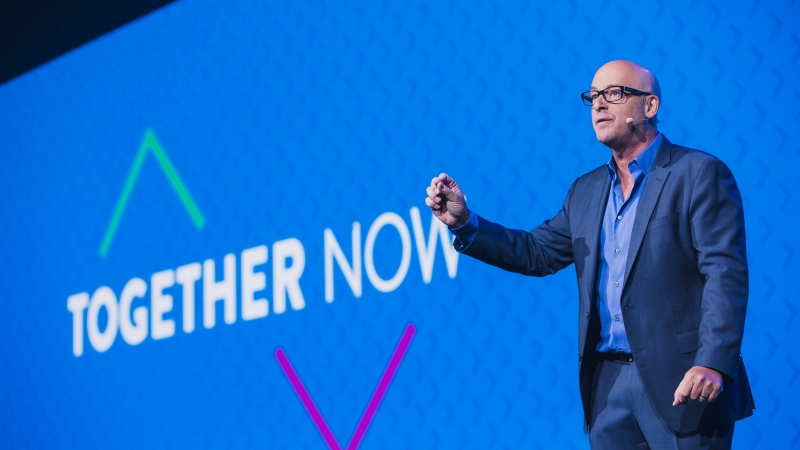
As your career grows, more and more people start handing you microphones; whether it’s just for a small acceptance of an award, to join a panel with your peers, or to keynote a major conference. Speaking at conferences and trade shows provides a huge opportunity to get your personal brand and company out in the spotlight while entertaining and educating attendees.
Speaking at events should be a win/win situation for everyone involved: the speaker (you), the event organizer, and the attendees/audience. These tips will help you take the leap from event attendee to speaker while creating value for everyone involved.
1. Understand the Event Audience
Before you even submit to speak or accept a request, be sure to understand the event audience. If you’re looking to generate leads for your company at the event, you’ll want to make sure your ideal customers are actually attending. This may mean passing up some opportunities to speak because it really wouldn’t provide value to you or the attendees. It might provide a paycheck but that’s not what speaking at events and conferences is for.
Another part of understanding the event audience is understanding what they want to hear about. Understanding the attendee demographic breakdown will help you prepare your talk for the event by understanding what the audience is really looking for. You’ll also be able to skip over topics you think they may already know. For example, if you’re speaking at Dreamforce you might not want to discuss the basics of using a CRM but you may want to discuss how certain customizations within Salesforce allowed your team to triple your revenue.
Being a great conference speaker is about understanding the event audience. It will help ensure everyone is on the same page going into developing your talk or presentation.
2. Let Event Organizers Know Early
The early bird definitely gets the worm when it comes to applying for speaking engagements. It shows that you’re paying attention to their event specifically and not just using the spray and pray tactic. Look for events anywhere from 4–6 months out and put the day the speaker proposals open on your calendar so you can apply early.
I also highly recommend following and engaging the event organizer on social media prior to submitting a speaker proposal. These little gestures go a long way.
3. Don’t Sell Your Product
Or, as we like to say, “less shill, more chill.”
If people don’t want to hear Gary Vaynerchuk talk about Vayner Media, they definitely don’t want to hear you talk about your business or product. Sorry, but they don’t care. What they want is valuable information that will help their own business.
That doesn’t mean you can’t mention your business or tell a story about how you were able to achieve x through y. Just like you all of your content marketing isn’t about your product, your presentation shouldn’t be either. By providing immense value to the audience, everyone will want to know the name of your company and talk to you afterward anyway. Be a great conference speaker and sell more by not selling anything at all while you’re on stage (besides yourself)!
4. Do Sell Yourself
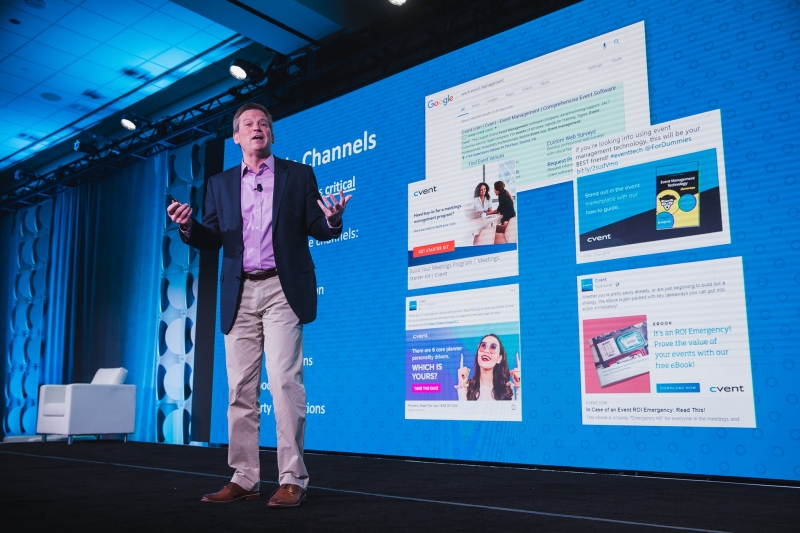
This is a two-part section because it involves both selling yourself to event organizers and to the audience.
When selling yourself to event organizers, come in with a strong game plan. Know exactly what you want to talk about and why you’re an expert, how much you expect to be paid for the engagement, and how you can help the organizer gain more exposure through your own network. Event organizers may come back to you and say they can’t/don’t pay speakers. This is a whole other conversation we plan on covering because it’s becoming a major issue. However, knowing your value and expectations will set the table for a better conversation up front.
Selling yourself to an audience is totally different. Before the event, try engaging with other attendees on the event app or on LinkedIn. It will drum up the people attending your talk and possible connections. You also want to make sure you’re super personable during the entire event, not just on stage. Selling yourself is about providing value, listening, and engaging. Knowing when and where to do this is key to your success in speaking at events and conferences.
5. Know Your Worth
In doing the research for this article, I came across way too many articles citing event organizers not paying speakers fairly. There are, of course, going to be discrepancies between veteran event speakers like a Cindy Gallop and someone just starting out. But, there are also huge differences between what men get paid and what women or people of color get paid. Some articles even cited that the same event paid male and female counterparts dramatically different sums.
Knowing your worth when you submit a proposal or are asked to speak at an event are crucial. You can avoid the awkward by being very upfront about your needs and expectations. Great seminars, keynotes, and sessions take hours to prepare and your time is valuable. Have a concrete deal in mind (speaking fees, travel, hotels, conference passes, etc) in mind before reaching out.
However, you don’t want your expectations to be too high. Be flexible when it comes to working with event organizers but remember your worth.
6. Set Yourself Apart
How many social media conferences are there? And how many sessions are at every social media conference?
I’m not about to do the math but I can tell you it’s A LOT.
And this is just talking about social media at social media conferences…What about sessions at other types of conferences covering social media? You get the point.
When you submit to speak, pick a topic that you know well and that will set yourself apart from the crowd. This is where your unique personality and experiences should come into play. If you’re pioneering a diversity campaign, talk about that. If you’re beginning to explore how to use new technologies in new spaces (like using VR in B2B sales) then definitely talk about that! Provide a unique value proposition as a conference speaker that only you could tell and you’ll be on your way to speaking at top conferences in no time.
7. Engage the Audience
Have you ever sat in the audience and had the speaker ask a question and no one even looked up from their smartphones?
You don’t want to be that person. We don’t want you to be that person.
Audience engagement is a tricky thing; that might be why we’re seeing event organizers invest more and more into attendee engagement software . Ask the event if they offer this technology and be prepared to use it if they do.
Engaging an audience is way more than asking questions or being the Microsoft hype man. It’s much more nuanced than that and should be incorporated throughout your presentation and in the way you talk. How your voice sounds, where you pause, what your slides look like, and so, so much more go into audience engagement. This is definitely something that takes practice, and studying other top speakers is a great place to start.
8. Publish Your Work
If you don’t have a personal website by now or at least a rockstar LinkedIn, you will want to get on that stat. Then, you’ll want to publish your presentations and talks online so you can get more reach with them. Once you have a few video recordings, you may also want to create a video reel so you can submit that to event organizers when you apply to be a conference speaker.
Another great thing about publishing your talks from the event is the ability to create even more content. You can put the contents of the talk into a blog post, talk about the experience, or upload a Slideshare of your presentation. Make sure you squeeze every drop of value you can out of speaking at events.
*Please make sure the event organizer allows for republication of the content both publically and personally (on your video reel).
You’re on Your Way to Being a 💣 Conference Speaker
These pointers are just the tip of the iceberg when it comes to speaking at events. Every event is different and so is every audience; don’t get discouraged if your speaker proposal is rejected. Get up and dust yourself off again and keep going!
Being a conference speaker can open amazing doors both personally and professionally and we can’t wait to see your success.

John Hunter
John is the Senior Manager of Event Cloud Content Marketing at Cvent. He has 11 years of experience writing about the meetings and events industry. John also has extensive copywriting experience across diverse industries, including broadcast television, retail advertising, associations, higher education, and corporate PR.
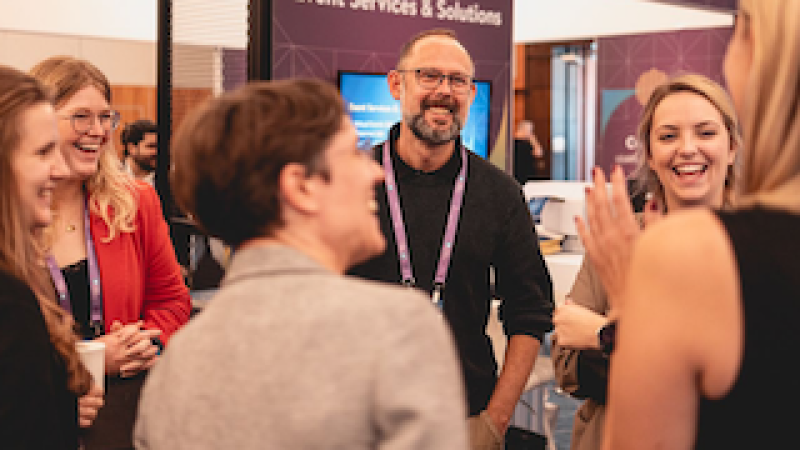
More Reading
Revitalizing luxury: w hollywood unveils a cultural hub and iconic destination, w hollywood’s reinvention: a cultural hub in the heart of los angeles, mastering internal meetings: a comprehensive guide to productive gatherings.
Subscribe to our newsletter
Get in touch with us – here
- About Ginger
- About Leadership
- All programmes and courses
- Purpose-Driven Leadership
- Storytelling Mastery
- 1-2-1 training/coaching
- Elevate your Influence
- Executive Presence
- Present with Influence
- Public Speaking Foundations
- Assertive Communications
- Boosting Visibility and Confidence
- Building Your Personal Brand
- Clear & Concise Communications
- Courageous Communications
- Fearless Feedback
- High-Impact Communications
- Messages that Stand Out From the Crowd
- The Essentials of Storytelling for Business
- Virtually Brilliant for Online Communicators
- hello@gingerleadershipcomms.com
- +44 (0) 207 3888 645
How to start a speech with power and confidence

It’s that horrible moment! You’ve just been called to stage, your audience is silent, waiting for you to open your mouth and now it’s your turn. But what do you say? How do you start a speech with power and confidence, rather than the usual “Erm… thanks very much for inviting me here…”
The simple truth is… your audience will judge you from the very first line of your speech . It may sound harsh but it’s very true. So it’s a good idea to start your speech with certainty and confidence, to quickly build a connection with the audience so they are eager to hear what you have to say next. There are many different ways to start your speech but it’s not just about the words you use. Creating a strong first impression is about more than your opening lines.
- Prepare to be yourself!
- First words count
- Telling your story
- Trying different approaches
- Reconnecting with yourself
1. Starting a speech: Prepare to be yourself!
Before you start to write your speech, think about your natural style and how you want people to feel. Give yourself time to consider:
- What qualities would you like to display as a speaker?
- What benefit would you like to give to your audience?
This will help you choose an authentic way to start your speech and will guide the rest of your talk in a direction that stays true to your individual personality and purpose. But that doesn’t mean playing it safe and being predictable. You can step out of your comfort zone – in fact, we positively encourage our speakers to be fearless – but that’s about stretching your true self rather than trying to be someone you’re not.

2. Starting a speech: First words count
And now onto what you’re going to say. First off, avoid starting a speech with lines like:
- Thank you so much, it’s a pleasure to be here
- I’m sorry, this isn’t going to take very long
- I was only asked last week/yesterday/10 minutes ago to do this speech
- A funny thing happened to me whilst trying to find the venue…
- Thanks for coming
This is your moment to shine, so shine from the get-go. To start a speech with power, find something unique, engaging and memorable to say. And make sure it’s a line that you’re 100% comfortable with, so your talk flies rather than sags from the beginning.
Here are some ideas from some of our favourite speech beginnings:
You might start your speech with a provocative question –
- “How do you explain why some people are able to achieve things that seem impossible?” – Simon Sinek, TEDx Talk
- “What do I know that would cause me, a reticent, Midwestern scientist, to get myself arrested in front of the White House protesting? And what would you do if you knew what I know?” – James Hansen, TED Talk
An amazing or shocking fact –
- “Sadly, in the next 18 minutes when I do our chat, four Americans that are alive will be dead from the food that they eat.” – Jamie Oliver, TED Talk
- “I’m talking to you about the worst form of human rights violation, the third-largest organized crime, a $10 billion industry. I’m talking to you about modern-day slavery.” – Sunitha Krishnan, TED Talk
A joke –
- “Good morning. How are you? It’s been great, hasn’t it? I’ve been blown away by the whole thing. In fact, I’m leaving.” – Ken Robinson, TED Talk
- “Okay, now I don’t want to alarm anybody in this room, but it’s just come to my attention that the person to your right is a liar.” – Pamela Mayer, TED Talk
By evoking an image –
- “Imagine, if you will — a gift. I’d like for you to picture it in your mind. It’s not too big — about the size of a golf ball.” -Stacey Kramer TED Talk
- “Imagine a big explosion as you climb through 3,000 ft. Imagine a plane full of smoke. Imagine an engine going clack, clack, clack, clack, clack, clack, clack. It sounds scary. Well I had a unique seat that day. I was sitting in 1D.” – Ric Elias, TED Talk
All of these speech beginnings get the audience connected and ready to listen . And a great opening line allows you to settle into your speech so that you can shine.
It feels a little scary cutting to the chase rather than dwelling on niceties. But you will have far more impact if you draw people into your talk immediately. And the audience will have heard the same bland introductions over and over again, so you’re actually doing them a favour by getting straight to the point!

3. Starting a speech: Telling your story
Start a speech with a compelling introduction to a story is a powerful way to begin. Even the driest of subjects can be brought to life through storytelling . Think about what drives you to do what you do. Has there been a pivotal moment in your life or career that led you to this moment? Did someone tell you that you’d never be able to do what you are doing now? Or can you paint a picture of a person you’ve helped, or want to help – what does that look like? Stories can immediately connect you with your audience and set the tone for the whole talk. And people are far more likely to listen to, remember and share your speech if it’s rooted in a strong story, rather than stuffed with facts and theory.
4. Starting a speech: Trying different approaches
Once you’ve narrowed it down to a few different ways to begin your speech, it’s time to try them out. It’s a bit like choosing a new item of clothing – it might look good on the hanger but it’s not until you try it on that you know whether it’s the right fit for you. By saying the opening lines out loud, you’ll get a feel for which ones are right for you.
Having said that, it’s important to challenge yourself to do something different, which may feel a little uncomfortable at first. One of the best ways to find out how your speech is likely to go down with the audience is to get independent, expert advice. The opportunity to explore and experiment with different styles in a safe environment is a huge benefit to our clients at Ginger. Our experienced coaches provide affirming feedback to help people understand and develop their strengths while challenging them to be even more ambitious with their speaking. If you feel like you are playing it a bit safe, then have a look at our training options so we can help you speak with more impact.
5. Starting a speech: Reconnecting with yourself
As it gets closer to the big day when you are going to deliver your talk, you can spend all the time in the world worrying about speaking. Am I wearing the right clothing? Do I have all my stuff here? What will the audience think of me? What if I forget what I’m going to say? It’s really common to find yourself in a whirl of endless questions which only serve to build your nerves. Many people describe public speaking as an ‘out-of-body’ experience, where they become so disconnected with themselves and the audience that they are unaware of what they are doing and can’t remember a thing about it afterwards. But the best speakers are fully present in the moment. According to Ginger coach Liz Balmford : “We can’t say for sure that they’re ‘relishing’ it, but perhaps one of the things that makes them compelling is their surrender to the moment, being fully present in their story and their message. I believe it’s this presence that makes them believable, that captivates us and makes us want to follow them.” To start a speech with power and confidence, it is vital that you reconnect with yourself before you get up to speak. That means spending a few moments getting back to yourself by finding a method to quieten the nerves and break the distance between yourself and your speaking. You might like to head outside for a few moments or even go to the loo; or find a place that is a little bit quiet and do a short breathing exercise. Focus in on your breath as well as your intentions for your speaking. Doing this allows you to be grounded and will help you to start your speech as yourself, rather than starting from a place of panic or self-doubt. Many people find it helpful to start this reconnection much earlier than the few minutes before their talk – for example, starting the day with meditation or mindfulness, taking a walk in nature, or going for a run. Whatever helps you to minimise distractions and worries.
Putting it all together
So, starting a speech is not as much about what you say as you might think. In fact, the key thing about starting a speech is to get yourself in the right state. If you show your confidence, your audience will have confidence in you too. But you don’t have to start ‘all-guns-blazing’.
The biggest cause of nerves in public speaking is that most of us try to be someone we’re not; so to get started with confidence, begin by being yourself . If the kapow, kapow approach just isn’t your style, then don’t start your speech like that. Find a different way to start that’s powerful for you. Permission to be authentic.
The key to starting a speech with power and confidence involves knowing what you’re good at and doing more of that; pushing yourself to try different ways to start your speech; telling your story; getting feedback on what works from the audience’s perspective; and staying connected with yourself as you step forward to do your talk. If you bring these elements together, you’ll captivate your audience as soon as you start speaking.
As the wise Maya Angelou said:
“People will forget what you said, people will forget what you did, but people will never forget how you made them feel.”
If you’d like to find out more about how you can get your talk off to a strong start, you can download our free guide: The 10 best ways to start your talk . And if you’d like to maximise your public speaking impact, take a look at our classes page for a range of training options. Learn to speak with Power and Confidence. Here’s a selection of courses that will help you develop your sills as a confident public speaker:
Pubilc Speaking Essentials
Leadership Communications
TED Style Presentation Training

Ginger Leadership Communications
This showcase of inspiring female speakers is part of Ginger’s work with game changing leaders.


Welcome Speech for Conference

Table of Contents
Welcome speech is a type of speech presented to welcome your guests and audience in a given event like a seminar conference or a party being hosted by you. Here, the kind of welcome speech covered is for a Conference.
Fill Out the Form for Expert Academic Guidance!
Please indicate your interest Live Classes Books Test Series Self Learning
Verify OTP Code (required)
I agree to the terms and conditions and privacy policy .
Fill complete details
Target Exam ---
I want to guarantee that this conference will be beneficial and full of valuable information for everyone attending. I’ll be your host for this event, and I’m delighted to welcome each of you to our yearly conference.
Long and Short Welcome Speech for Conference in English
These are in the form of both short welcome speeches for conference as well as long welcome speeches for conference. These are comprehensively written elucidating on the importance of the conference and the given subject that is being raised in it. If you want to prepare for the same then browse through the pages and pick your relevant topics.
Conference Welcome Speech – Sample 1
Warm Greetings for the Day, Ladies and Gentleman – How’re you all doing?
I, Sandeep Khaneja, welcome you all to the 11 th conference of/on _____ at ……….. Firstly, I would like to thank the experts for taking their precious time out and making to this event. Secondly, I would want to thank my audience for being present here today. Before we begin with our today’s session, please allow me to deliver a short speech in order to warm up everyone regarding today’s to be discussed key issues.
One of the today’s major topics of concern, ladies and gentlemen is Gender Disparity in the Working Sector. I am sure our experts must have done their bit of studying around the topic and so our audience. This is a topic that each one of us can relate with, particularly the working class. Despite our relentless efforts towards ensuring equal rights and opportunities for all, it is very unfortunate that we have not been able to completely uproot this social evil called gender disparity from our society.
This gender disparity is manifested in various forms in our society which clearly reflects in our working sectors as well. How often we get to hear and experience many cases of female harassment and unfair distribution of work. This makes very difficult for females to feel safe and work up to their optimum capacity to be able to deliver results. Due to which they become deprived of many opportunities that come their way and hence are unable to develop professional competencies. Moreover, they have to strike a balance both in their personal as well as professional lives and hence aren’t able to work for late hours so often, in the corporate sectors like their male counterparts do. The unfair distribution of work and responsibilities and hence lower perks and incentives really mar the spirit of the female employees and deter them from working to their maximum capacity.
This disparity really impedes the growth of our working sectors and eventually our economy. It is very important to treat both the sexes equally and help them attain their complete potential. So this is an extremely critical subject for drawing everyone’s attention and taking concrete measures so that an overall growth of our working sectors can be attained. A nation that gives equal opportunities to its people and aids in the economic and mental capacity of its people, becomes a prosperous nation. Gender disparity is a grave concern and we should not overlook it at all.
Now, I would like to invite our honorable guests on stage and would request them to share their knowledge with us. It would really help us delve deeper into the subject and understand its nuances. I would also request my audience to remain seated and listen to our experts as thereafter they shall be liable to raise their doubts and questions. These doubts and questions then will be taken up by our panel of experts.
Thank you so much everyone! Hope you enjoyed the session…

Conference Welcome Speech – Sample 2
To our distinguished guests, ladies and gentlemen – A very Warm Welcome!
I feel extremely glad to welcome everyone to this much awaited conference as it marks the 10 th yearly group meeting and it gives me immense pleasure to be standing in front of you all, i.e. amongst the most esteemed personalities who have won accolades in their respective fields.
Before we kick start the conference, I would like to express my gratitude towards you all who sincerely contributed to this event in order to make it a success. This wouldn’t have been possible without the support of each and everyone present here.
In today’s conference, our Hon’ble guests would like to shift their focus to our youths, particularly volunteers who work relentlessly towards the common goals, i.e. empowering the youth of our country and spreading awareness about the issues that concern us in the contemporary times.
People who have been chosen for today’s event have been chosen for a reason, i.e. due to their mutual passion. Your passion for a common goal helps us to bring you all together and unite the energy in the realization of these goals – whether on an individual level or a group level. We all need each other for the fulfillment of our common goals and that’s why it makes our resolution even stronger.
In the coming months, you all will be made to learn what all are the different ways in which we can plan our different activities, special events, seminars, where you will be able to be a part of these activities and also get hands on experience. I hope it will help you become smarter and more productive.
In order to help our nation achieve an overall development in all the sectors of society, it becomes very important to tap the energy of our youth in the right way otherwise none can prevent that nation from facing a steep decline. Clearly, our youth is the future face of your country and they have an infinite store of energy with them in addition to great ideas; therefore if they are provided with the right platform and abundant opportunities they are likely to shine like a star.
Luckily, in the present times, there is no dearth of opportunities available in various fields, whether it’s Education, Entertainment, Spirituality, Science and Technology, Health, Fashion, etc. Now there is a wider scope available and our youth can realize their potential to the maximum by undergoing vigorous training sessions.
I strongly feel that acting collectively is the need of the hour and uniting our youth for a common cause can work wonders. It is my most sincere hope that owing to our relentless endeavors, this conference will help our youth take strong resolutions on how they can move closer towards the attainment of their goals.
Now, I would request our chief guest to come on the dais and share their thoughts on the same.
Conference Welcome Speech – Sample 3
Good Evening Ladies and Gentlemen – A warm welcome to all of you!
It gives me immense pleasure to announce the fifth anniversary of our lifestyle magazine called Trends. I, Sourabh Shukla, the co-editor have been associated with this magazine since its inception and feel extremely ecstatic to have been given the opportunity to host today’s evening.
Now, I would want to felicitate our guests of honor who have set a benchmark in the success of magazine’s editions and are helping people stay updated with the latest trends. Their magazines have a wider coverage and really rule the marketplace, i.e. the fashion industry. So we are feeling extremely glad that these eminent personalities could be a part of our small Endeavour and have gathered today for making it a success.
A big thank you to all of you who have not only helped in running this magazine for five years relentlessly, but also making it a huge success! We started in a very small office and now our magazine is known as one of the reputed names in the fashion industry. We couldn’t have asked for more! Our in-house team of writers, editors, senior correspondent and printing department – everyone from bottom to top has greatly contributed in the making of this magazine and helping it become what it is today.
So today we have gathered not only to celebrate the victory of our magazine, but also to invite suggestions from you all in helping it improve and making it better than what it was yesterday. This of course cannot happen overnight and we will have to be very patient in dealing with the nitty-gritty of the subject of this magazine. Ladies and gentlemen as we all know that fashion industry is in a constant state of flux and what is relevant today suddenly become irrelevant tomorrow and therefore to be able to keep a tab on these fast changing trends is not at all easy.
As you all know that through our magazine we help people shape to their tastes, wherein they start acknowledging latest fashion trends, so to be able to guide them we need to stay at the forefront always ready to understand the nuances of the various fashion trends as what may work for a certain section of society may not work for another. Not everything that is in trend may work for us as there could be some horrible fashion drift. In such a case we, who are writing as experts, have to remain on our guard while taking critics’ opinion into purview.
Now, may I please invite on stage the great fashion expert, Mr. ………, to join me and say a few words in this regard. I would also like to request him to give us some real time analysis of the fashion trends and how we can help improve ourselves.
This is all from my side and thank you for being such patient listeners!
Hope you all have a great evening today!
Conference Welcome Speech – Sample 4
Distinguished Delegates, Ladies and Gentlemen!
It gives me great pleasure to extend to you all a very warm welcome on behalf of Centre for Natural Resources and to convey how grateful we are to Ministry of Agriculture for accepting our invitation to convene this conference on “Waste Water Management in India”. It is an opportune time to renew contacts and discuss problems of mutual interest with delegates from the Ministry. It is gratifying to note that the agenda of the conference covers a wide range of interesting themes relating to various kinds of treatment in order to convert waste water which are directly related to aspects of water and fertility management.
On behalf of my institution, I am highly obliged to the research scholars who have made it to the conference and would be presenting their papers on varied themes of waste water management, which is need of the hour. These papers would ultimately enlighten all of us present here on the need for converting waste water and using it judiciously, saving it for our future generations.
I am grateful to Dr. Swaraj to share his views on “Domestic Sewage: A Major Roadblock for Water Management”. His research paper clearly highlights certain important facts which mainly include that, sewage which mainly originates from our households is referred to as domestic sewage. It consists of wide variety of suspended impurities. We clean our houses with soaps and detergents which contain high amount of chemicals, which often pollute the water leading to water pollution. Human excreta which dissolves with this chemical water, gets in to streams and ocean water, serving as food to bacteria present in them. The main consequence of this process is that algae and bacteria tend to overpopulate under water which makes it difficult for other aquatic life to survive.
This aspect of domestic sewage makes things worse for water being converted for judicious use. Sewage treatment of water is majorly divided into 3 phases which includes primary, secondary and tertiary treatment. Primary treatment physically separates solids and liquids. The wastewater passes through a grating that strains out large particles. The remaining water is left to stand in a tank, where smaller sediments like particles of sand, clay, and other materials settle to the bottom. At this point, the liquid part of the wastewater still contains many pollutants and is not safe for exposure to humans or the environment.
In the second step, called secondary treatment, the liquid part of the wastewater passes through a trickling filter or an aeration tank. After secondary treatment, the water is generally free from the majority of pathogens and heavy metals. It still contains high concentrations of nitrate and phosphate, minerals that can over-stimulate the growth of algae and plants in natural waters, which can ultimately cause them and the surrounding organisms to die. Tertiary treatment removes these nutrients from the wastewater.
Heartiest congratulations to all the presenters and members of the ministry as without your support this conference wouldn’t have proved to be beneficial to this extent. I would now like to call upon our distinguished guest from the ministry to share their views on our scholar’s presentations and what could be the future solution to this major problem of waste water management.

Welcome Speech for Conference FAQs
How do you start a conference welcome speech.
To start a conference welcome speech, greet the audience, introduce yourself, and express your excitement for the event.
How to do a welcome for a meeting?
To do a welcome for a meeting, begin by acknowledging the attendees, share the meeting's purpose, and set a positive tone.
How do you welcome a guest speaker speech?
To welcome a guest speaker, appreciate their presence, introduce them, and highlight their expertise.
What are some welcoming words?
Welcoming words can include Hello, Welcome, Good to see you, or Thank you for being here.
How do you welcome all in a meeting?
To welcome all in a meeting, simply say, Welcome everyone and express your gratitude for their participation.
Related content
Talk to our academic expert!
Language --- English Hindi Marathi Tamil Telugu Malayalam
Get access to free Mock Test and Master Class
Register to Get Free Mock Test and Study Material
Offer Ends in 5:00
Talk to our experts
1800-120-456-456
- Welcome Speech for Conference

Welcome Speech for Conference for Students in English
A welcome speech is usually given in the beginning and guests are welcomed by giving an introduction of their names. A welcome speech for a conference is given to inaugurate an event that is held for a certain amount of time. A welcome speech for a conference should include important points like the importance of participating and what a person can gain from it.
Here, we have provided long and short welcome speeches for the conference and, along with that, we have also given 10 line pointers about the welcome speech for the conference. Students can refer to these speeches and note down all the important points which could help them to deliver a good speech.
Long Welcome Speech for Conference Delegates
Good morning to everyone present here! Thank you in advance for joining us at this 5-day International Personal Development Conference, 2021.
It is my pleasure to introduce to you all the speakers and the personality trainers who have come from all across the country today to share their knowledge and teach all the techniques to improve your personality. Today’s conference has around 5000 enthusiastic students from more than 20 schools around the country. This will make our personality development conference truly country level.
Our personality development conference was started in 2005, almost 15 years back, and it was the time when phones were first introduced in the market and the internet was a luxury for many people. So, our personality development conference was the only way students could improve their personality and make a good first impression.
Our personality development conference has come a long way since 2005. Many like us come and perish, but we have stood tall against all the challenges that we faced. We understood and adapted to the changing technological trends in the industry. From having only 25 students in 2005, we have come a long way in making this conference a huge success by having almost 5000 students participating in this 5-day conference at various schools.
We are proud to announce that we will be partnering with Vedantu to reach and teach all the students who are at home. Vedantu provides us with the platform to do so. Through Vedantu you can access our personality development course and learn all the courses that will allow the students to build a positive first impression. All you have to do is to subscribe to Vedantu on youtube or visit their official website and you can access all the courses for free. Our goal is not only to teach the 5000 students present here but to reach all the students across the country.
The main aim of the conference is to enhance your personality. The program is divided into three stages. The first stage is a group discussion, where a group consisting of 20 students will be formed. Each group will be monitored by our expert speakers that will help each student to improve their public speaking skills.
The second stage is an informative session in which tips and tricks about personality development will be shared by our personality experts. The do’s and don'ts taught by our personality expert will help the students to improve their personalities.
The third stage is about a one-on-one debate with our personality development trainers. Students will be provided with an opportunity to speak with the trainer personally and clear all their doubts. This stage is designed to help the student overcome anxiety and the fear that students might face when they speak.
The main aim of this conference is for the betterment of all the students and like every year we hope students will give the best in all the stages and overcome all their fears. Last but not the least, I would like to thank all personality development speakers, the school authorities across the country, and the Education Department of Karnataka. Without your constant support and belief through all these years, this program would not have been possible.
To conclude I wanna ask all the students to give and try their best and overcome all their fears and insecurities. I wish everyone all the best.
Short Welcome Speech for Conference Delegates
Good morning to everyone present here. I welcome you all to this 5-day conference on personality development.
It is my honour to introduce to all of you the trainers and speakers of today’s event. They have come from across the country to share their valuable knowledge of personality development. Everybody, please give a round of applause to every speaker here on the stage. So, why is this conference a big deal? Well, today’s conference includes 20 schools from all around the country and around 10,000 students participating.
In 2005, we started our journey and it has been almost 15 years; as the years passed we have accomplished greater heights and have expanded our family. We only had 50 students when we started this conference in 2005 and now, we have more than 10,000 students participating from more than 20 schools from all around the country.
Vedantu has joined hands with us as our digital partner to help all the children to attend this conference from the comfort of their homes. All you have to do is subscribe to Vedantu on youtube or visit their official website and you can attend the conference for free.
The main aim of this program is to enhance your personality and to make you speak without fear. The program is divided into three stages. The first stage is a group discussion, the second stage is an informative talk with our personality development trainers, and the third stage is a one-on-one debate with the personality development trainers. All of these stages will assist you in facing your worries, which will help you develop your speech and listening abilities.
In conclusion, I want to ask all students to do their best to conquer all their insecurity and fear. I wish you all the best. Thank you.
10 Lines on Welcome Speech for Conference Delegates
A welcome speech for the conference is given for an event that is held for a certain amount of time.
Thank you in advance for joining the given day international conference on personality development.
We have international speakers and a personality development trainer that will share their knowledge on how to speak freely on stage without any fear.
This five-day conference on personality training has more than five thousand students from twenty schools around the country.
Fifteen years ago, our first personality development conference was started and only twenty-five students attended during that time. After years of hard work and dedication, our programs have helped thousands of students all across the country.
We are very proud to announce that we will be partnering with Vedantu to help the program reach every student all across the country. Vedantu provides us with a platform through which students can freely access our personality development course.
The main aim of the personality development course is to mould his or her personality.
The personality development course is divided into three stages: the group discussion which will help the students to face their biggest fear of a huge crowd.
The second stage is an interactive session in which the gurus of personality development will share the tricks on how to mould a personality to speak without fear on the stage.
The third stage allows the person to have a one-on-one personal session with a personality development trainer.
A welcome speech for conference should be memorable enough. You can ensure the same by planning and practicing your speech in advance, speaking slowly and clearly, and engaging with your audience. While delivering the speech, also ensure you have a confident body language. You can also divide your speech into sections, keep it short, and include jokes or any personal story to prevent boredom. Using visual aids also helps. Also, refrain from making any grammatical mistakes.

FAQs on Welcome Speech for Conference
1. What phrases can be used for welcome speech for a conference?
Here's a hearty welcome, big and warm enough to surround you all!
To say we are excited to see you is an understatement."
"It's my happiness to extend a friendly welcome to you all!
Your presence makes us very happy."
Glad to welcome you.
Generous welcome.
Gracious welcome.
Respectful welcome.
2. How to prepare a speech for a conference?
There are a number of things that you need to consider when preparing a presentation. It includes the aim of the presentation, the subject matter, the audience, the venue or place, the time of day, and the length of the talk.
3. What things should be considered while delivering a speech for conference?
Use your voice expressively and meaningfully.
Minimize the uhs, ums, likes and y'knows.
Enunciate words clearly. Don't mumble or garble them.
Speak with appropriate loudness and speed. Consider the audience, place and topic.
Use variations in speed, inflexions, and force to enhance your meaning and hold the audience attention.
4. How to finish your speech for conference?
Use your conclusions as an opportunity to summarize the gist of your speech.
Do not repeat important points word for word. Instead, paraphrase the important issues and discussions you have just presented.
Consider ending the speech with an additional anecdote or quote that captures the topic of the speech.

How to Deliver an Effective Closing Speech for a Scientific Conference
In the world of scientific conferences, delivering a well-crafted closing speech is an important task. In this post, we will guide you through the key sections of a successful closing speech, helping you leave a lasting impression on the attendees and wrap up the conference on a high note.
Key Highlights and Breakthroughs
As the conference comes to an end, it's crucial to provide a concise summary of the main highlights. Reflect on the significant themes, breakthroughs, and notable research contributions discussed throughout the event. By summarizing the conference, you reinforce the key takeaways for the attendees and remind them of the value gained from their participation.
Recognizing Organizers and Contributors
Expressing gratitude is an essential part of any closing speech. Take a moment to acknowledge and appreciate the hard work and dedication of the conference organizers. Recognize their efforts in creating a platform that fosters knowledge exchange and supports scientific advancement. This is also an opportune time to thank the speakers for sharing their expertise and the attendees for their active participation.
Spotlight on Inspiring Presenters
Highlighting the contributions of the keynote speakers and presenters adds a personal touch to your closing speech. Briefly mention some of the standout speakers and their presentations, emphasizing the significance of their research and the value it added to the conference. This recognition not only acknowledges their efforts but also provides a sense of accomplishment and appreciation for their contributions.
Thanking the Active Conference Participants
Expressing gratitude towards the attendees is crucial, as their presence and engagement play a pivotal role in the success of the conference. Thank them for their active participation, thought-provoking questions, and valuable discussions. Emphasize that their collective presence contributed to the vibrant and intellectually stimulating atmosphere of the event.
Personal Insights and Takeaways
In this section, share your own reflections on the conference. Discuss the most memorable, interesting, or impactful moments that stood out to you personally. Highlight how the conference has contributed to the advancement of knowledge in the field and inspired further research. By offering your insights, you encourage others to reflect on the value and impact of the conference as well.
Keep momentum, keep the community
As the conference draws to a close, it's important to inspire and motivate the attendees to continue their scientific endeavors beyond the event. Encourage them to maintain the spirit of collaboration, knowledge sharing, and research excellence that the conference exemplified. Emphasize the importance of sustained efforts and continued engagement to drive scientific progress in the future.
In the closing section, provide your final remarks and wrap up the speech. Reiterate your gratitude to the attendees, organizers, and speakers for their contributions. Leave them with a positive and uplifting message that reinforces the significance of their involvement and participation in the conference.
Delivering a compelling closing speech for a scientific conference requires careful planning and execution. By following the structure outlined in this post, you can create a memorable and impactful closing speech that leaves a lasting impression on the attendees. Remember, a well-crafted closing speech not only signifies the end of a conference but also acts as a catalyst for future collaborations, research endeavors, and scientific advancements.
We hope this guide helps you deliver an effective closing speech at your next scientific conference. Best of luck with your future presentations.
Subscribe to our newsletter
Get the latest posts delivered right to your inbox.

Now check your inbox and click the link to confirm your subscription.
Please enter a valid email address
Oops! There was an error sending the email, please try later.
Roberto Rabasco
+10 years’ experience working for Deutsche Telekom, Just Eat or Asos. Leading, designing and developing high-availability software solutions, he built his own software house in '16
Recommended for you

How to Write a Research Funding Application | Orvium

Increasing Representation and Diversity in Research with Open Science | Orvium

Your Guide to Open Access Week 2023
- International
Trump can pay smaller bond in civil fraud case as judge sets April date for hush money trial
By Lauren del Valle , Jeremy Herb , Kara Scannell , Maureen Chowdhury , Dan Berman and Elise Hammond , CNN
Key takeaways from Trump’s wild day of legal developments
From CNN's Jeremy Herb, Lauren del Valle and Kara Scannell
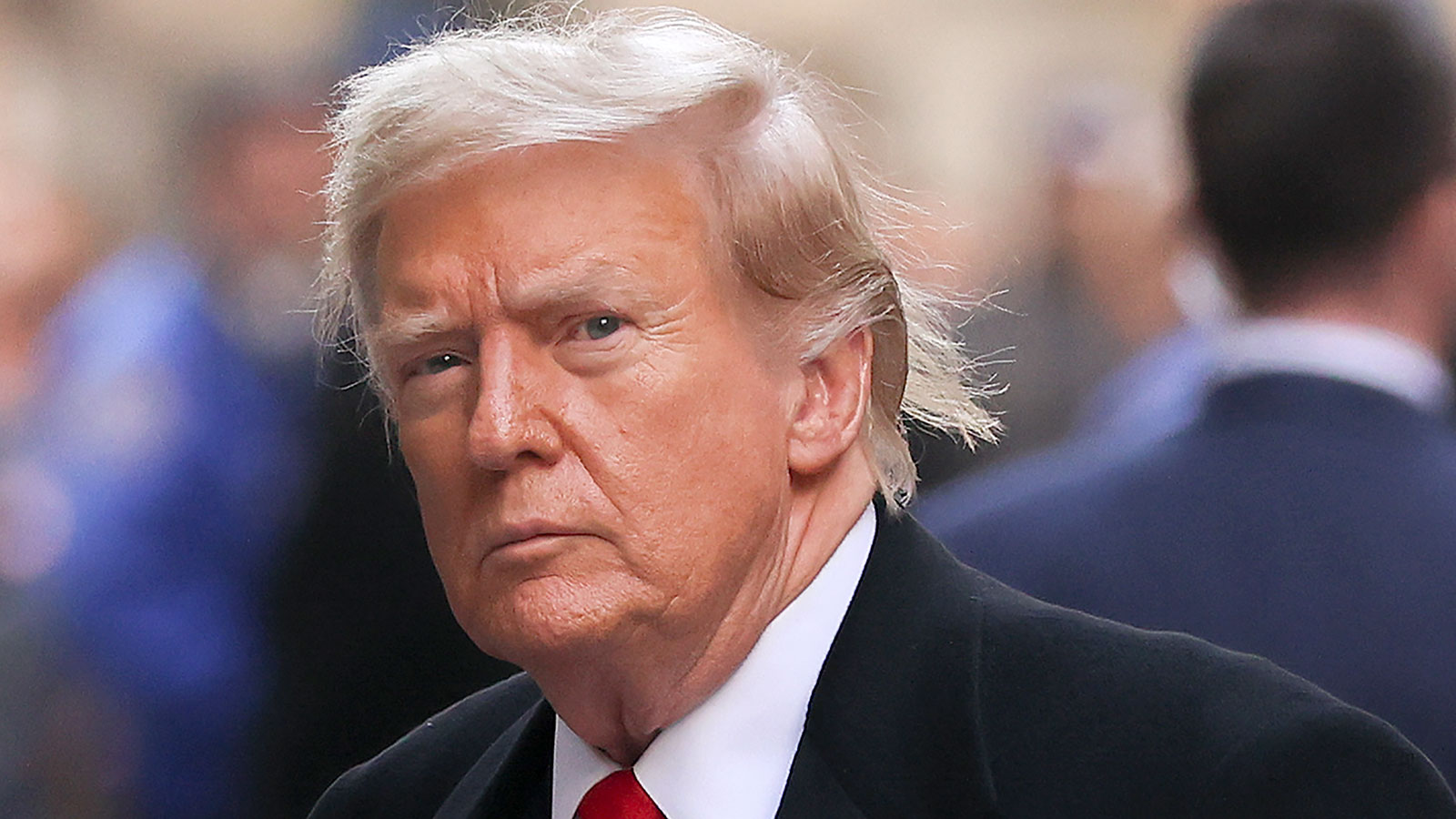
Donald Trump received both a lifeline from the courts Monday and a trial date for the first criminal trial of a former president in US history, a pair of rulings that hit home the legal whiplash constantly surrounding him.
The twin rulings Monday, which came roughly within an hour of each other, hit the intersection of challenges to Trump’s image and his famed business empire as he seeks a second term in the White House.
Here are key takeaways from another historic day for Trump:
- Hush money trial date set: Trump’s historic criminal trial in the New York hush money case against him will begin with jury selection on April 15, Judge Juan Merchan said Monday, after a dispute over the late production of documents caused the judge initially to push back the start date . Barring another unforeseen hiccup, the former president will face a jury on criminal charges for at least one of his trials before the November election. The date is three weeks later than originally scheduled, but the delay won’t make much of a dent on Trump’s 2024 calendar – and it’s still murky whether any of his other three trials will happen before the election.
- Appeals court lowers Trump’s bond: The more significant ruling Monday may have been a New York appeals court allowing him to post a reduced $175 million bond to appeal the $464 million civil fraud judgment against him, his adult sons and his company. Trump told reporters he will cover the bond using cash as a collateral. Trump’s lawyers said last week that he was unable to post a $464 million bond to appeal the civil fraud judgement against him. Trump faced a Monday deadline to post bond or else New York Attorney General Letitia James could have begun the process of seizing his property. But the appeals court ruling gave Trump an additional 10 days to post a bond of $175 million.
- Judge dismisses allegations made against district attorney: During Monday’s hearing, Merchan also discredited Trump’s allegations of misconduct against the district attorney’s office, finding that prosecutors cooperated in the effort to secure documents from the US Attorney’s Office of the Southern District of New York. "It’s odd that we’re even here," the judge said at one point. The judge repeatedly also said how serious and concerning Trump’s allegations were against Manhattan prosecutors, at one point raising his voice on the bench.
Read more about today's legal developments in the two cases.
Fact Check: Trump repeats baseless claims about Biden orchestrating his trials
From CNN’s Daniel Dale
Former President Donald Trump repeated some familiar baseless claims in remarks on Monday after major developments in two of his New York legal cases. He spoke after a judge set an April 15 date for the beginning of his Manhattan, New York, criminal trial on charges of falsifying business records related to a hush money scheme, and, separately, an appeals court reduced the bond he must put up after being found liable for civil fraud.
Trump claimed that “this is all Biden-run things” and that “these are all Biden trials.” He also claimed that Matthew Colangelo, a former senior Justice Department official who now works for Manhattan District Attorney Alvin Bragg, had been “put into” the district attorney’s office by Biden.
Facts First: There is no basis for Trump’s claims. First, there is no evidence that Biden has been involved in bringing or running any of the criminal or civil cases against Trump. The Manhattan prosecution is being led by Bragg and the civil fraud case by New York state Attorney General Letitia James. Both Bragg and James are elected officials who do not report to the president or the federal Justice Department. Second, there is no evidence that Biden had anything to do with Colangelo’s decision to leave the federal Justice Department and join the district attorney’s office in 2022 as senior counsel to Bragg . Colangelo and Bragg knew each other before Bragg was elected Manhattan district attorney.
Read more about the fact check.
A look at Trump’s busy legal and election calendar
From CNN's Devan Cole and Amy O'Kruk
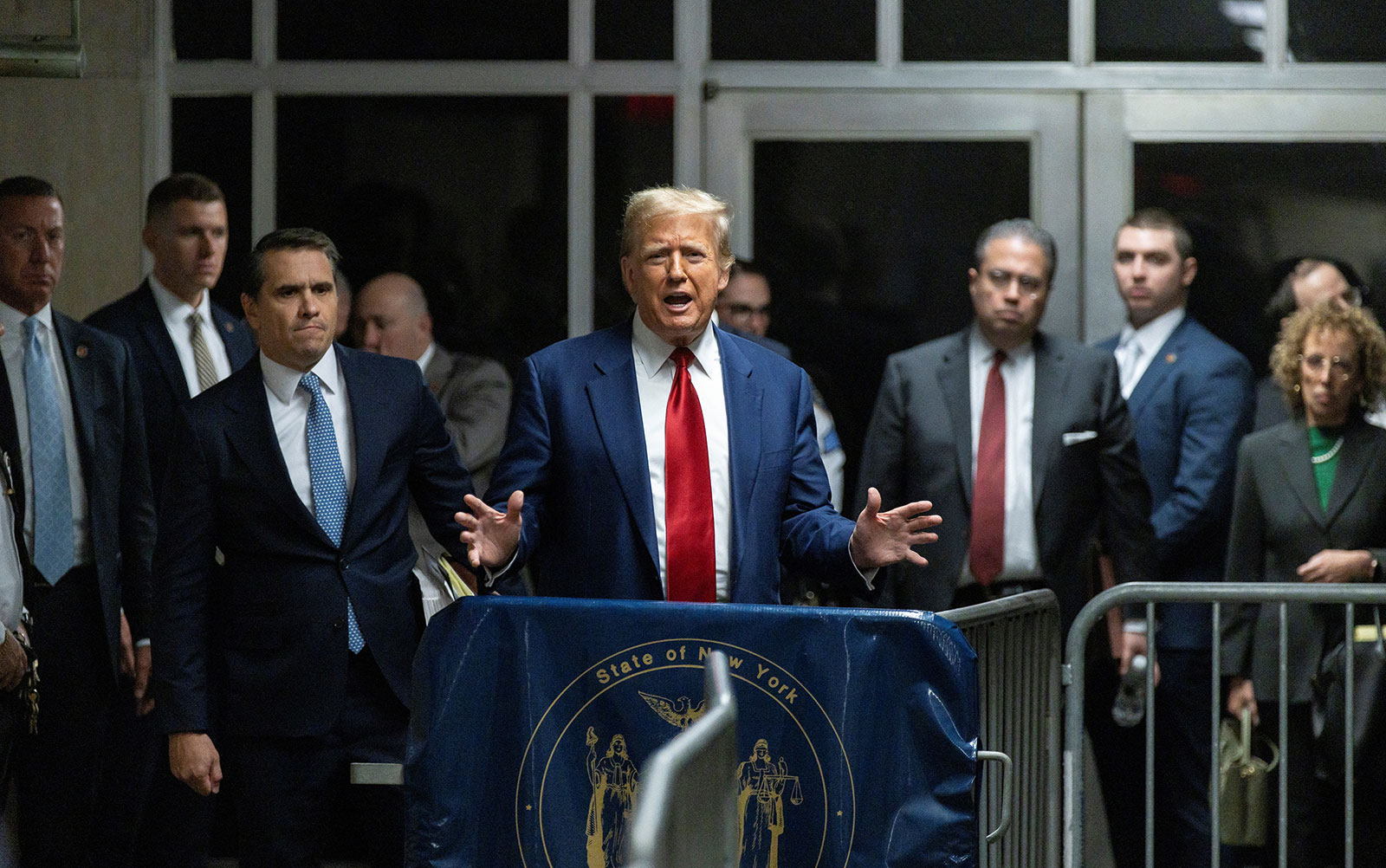
Donald Trump is juggling a busy court and campaign schedule as he defends himself in several criminal cases while also vying for a second term in the White House.
The former president’s criminal hush money trial is expected to start on April 15 . He faces charges stemming from his alleged falsification of business records with the intent to conceal illegal conduct connected to his 2016 presidential campaign.
The trial start date in Trump’s classified documents case in Florida had been set for late May, but the judge overseeing that case revisited the timing of the trial during a key hearing on March 1. Judge Aileen Cannon has not yet set a new date for the trial.
Here's what the former president's colliding calendar looks like:
Here are where things stand in Trump's civil fraud case and criminal hush money trial
From CNN's staff

Former President Donald Trump had a big legal day on Monday where some major movements happened in the civil fraud and hush money cases against him.
Here's what to know about each case:
Hush money case : Trump is charged with 34 counts of falsifying business records , stemming from reimbursements made to Trump’s former lawyer and fixer Michael Cohen for hush money payments he made before the 2016 election to cover up an alleged affair with adult film star Stormy Daniels.
The former president has pleaded not guilty and denied the affair.
During a hearing in New York on Monday, which Trump attended, Judge Juan Merchan said the criminal trial against the former president will begin on April 15 with jury selection. The judge dismissed the Trump’s motion to toss out the indictment altogether or delay the trial further.
Civil fraud case : A New York appeals court ruled Trump must pay a $175 million bond as he appeals the civil fraud judgment against him. He also was given 10 additional days to post the bond.
It’s a major lifeline for the former president, who, along with his adult sons and his company, were fined more than $464 million, which was due today, after Judge Arthur Engoron found Trump and his co-defendants fraudulently inflated the value of his assets.
The ruling staves off the prospect, for now, of New York Attorney General Letitia James seeking to seize the former president’s property to enforce the judgment against him.
Trump attorney says appellate ruling on civil fraud bond is a "great first step" towards reversal of judgment
From CNN’s Kara Scannell
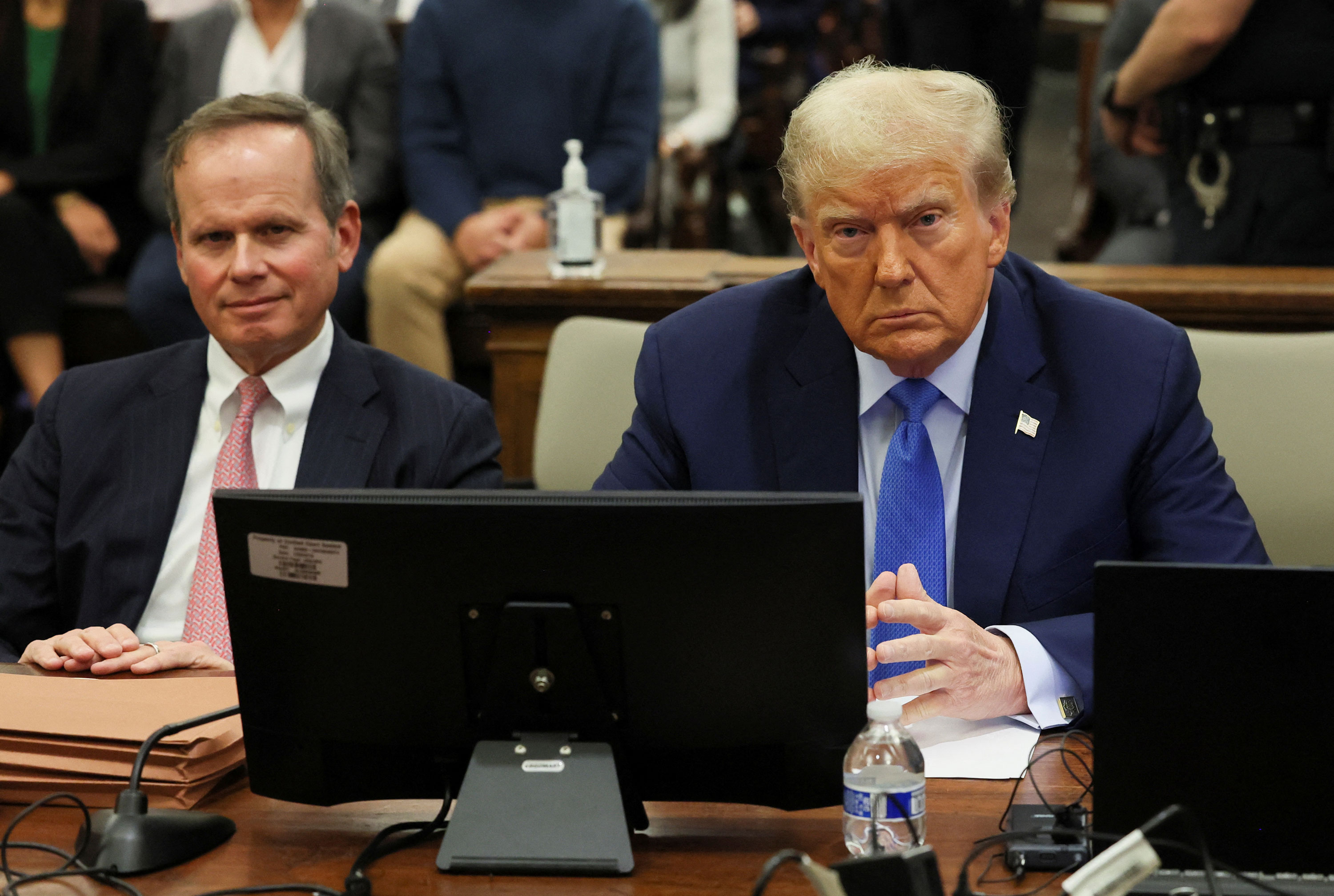
Donald Trump’s attorney Christopher Kise in a statement said the appellate ruling on the civil fraud bond is a "great first step towards reversal of “baseless and reckless judgment.”
Kise also said Trump looks forward to a "full and fair appellate process" that ends the New York Attorney General’s "abuse of power and tyrannical pursuit" of the Republican presidential candidate.
More on the ruling: A New York appeals court Monday said Trump has to post $175 million in 10 days in order for his appeal of Judge Arthur Engoron’s ruling to go forward — giving the former president a lifeline as he faced possible seizure of his prized real estate properties.
New York appellate court's ruling to reduce Trump’s bond is "highly unusual," legal expert says
From CNN’s Allison Morrow
Donald Trump scored a roughly 60% discount on the amount of cash he’ll need to pony up to avoid having his assets seized by the state of New York — an outcome that one legal expert said was “highly unusual.”
A New York appellate court reduced Trump’s bond to $175 million from $464 million, and granted him 10 days to come up with the payment.
“It’s highly unusual that it would be reduced at all,” said Mitchell Epner, a former federal prosecutor in New York. “And it’s highly unusual that it would be reduced by this amount.”
But, Epner said it’s not unprecedented, citing the 1980s fight between Texaco and Pennzoil, in which a court reduced Texaco’s bond from more than $10 billion to $1 billion. Texaco ended up filing for bankruptcy in 1987.
Trump, his adult sons and his company were fined more than $464 million, including interest, in the New York civil trial, after Judge Arthur Engoron found Trump and his co-defendants fraudulently inflated the value of his assets.
Correction: This post has been updated with the correct dollar amount of Trump's earlier bond.
Trump says he would have "no problem" testifying in New York hush money trial
From CNN's Ali Main
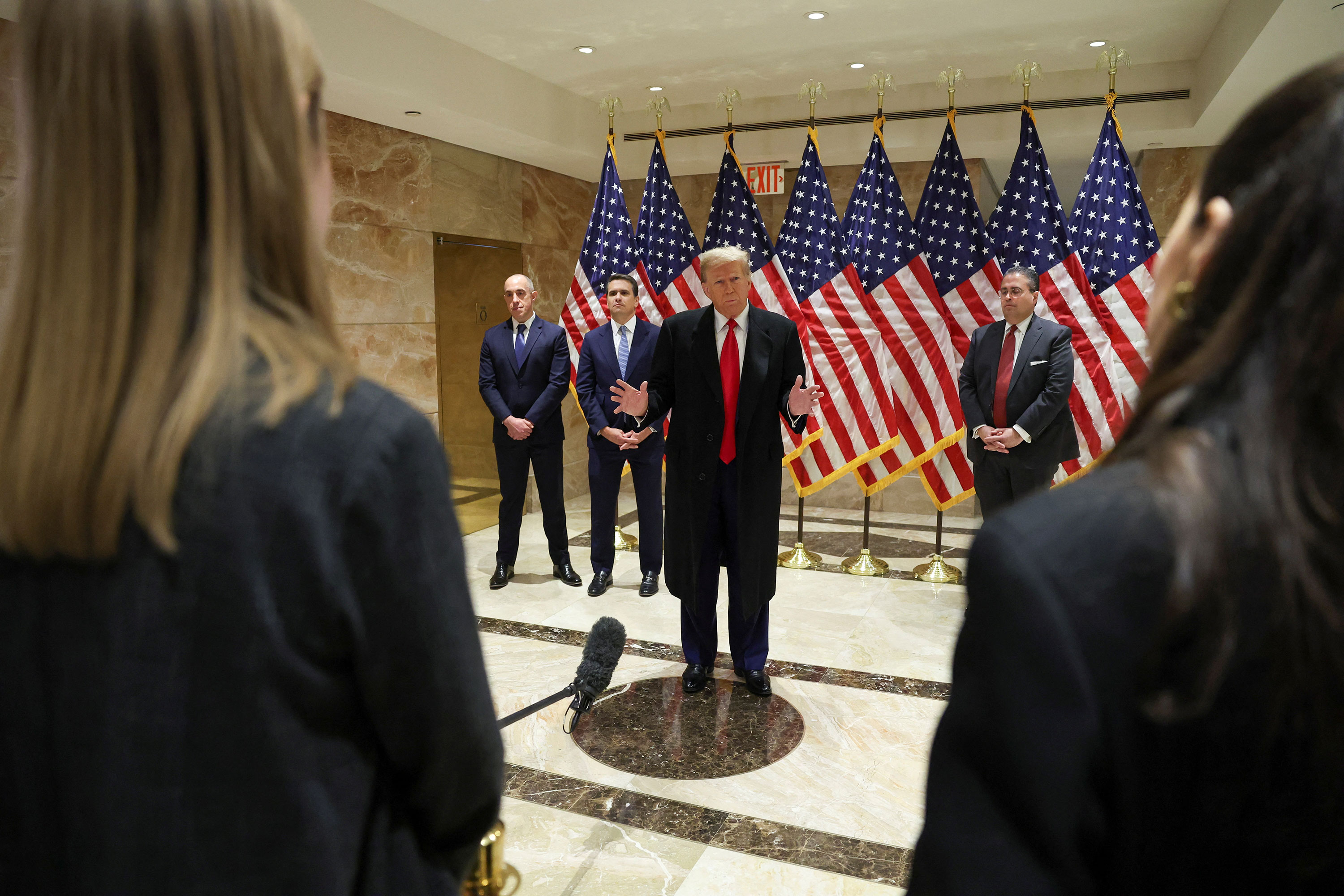
Former President Donald Trump said Monday that he would have "no problem" testifying in his criminal hush money trial that is now scheduled to begin next month.
"I would have no problem testifying. I didn't do anything wrong," Trump told reporters after attending a hearing in that trial in New York.
Trump’s New York criminal trial will begin on April 15 with jury selection, Judge Juan Merchan said Monday, after dismissing the former president’s motion to toss out the indictment altogether or delay the trial further.
Despite the set date, Trump cast doubt on whether the trial would take place, saying, "I don't know that you're gonna have the trial. I don't know how you can have a trial like this in the middle of an election, a presidential election."
Asked if he was concerned that a conviction in that trial could cost him the election in November, Trump answered, "Well, it could also make me more popular because the people know it's a scam. It's a Biden trial."
Trump on civil fraud bond: "I have a lot of cash"
From CNN's Ali Main and Kate Sullivan
Former President Donald Trump touted that he has "a lot of cash" when asked about the timeline of securing the $175 million bond in the civil fraud case against him.
He went on to say how he would also like to use his cash funds for his reelection bid and claimed, but "they don't want me to use my cash to get reelected."
Asked if he planned to start personal funds into his presidential campaign, Trump responded, "First of all, it's none of your business," before adding, "I might do that. I have the option."
The former president also said he thought it would be possible to borrow money from a foreign government to post a bond in an American trial, but that he wouldn't need to. Pressed by CNN's Kate Sullivan if he would ever accept money from a foreign government to pay, Trump responded, "I don't do that. I mean, I think you'd be allowed to, possibly," remarking that many of the "biggest banks" are outside of the US.
This post has been updated with additional comments from Trump.
Trump claims hush money trial is being rushed as it is set to begin next month
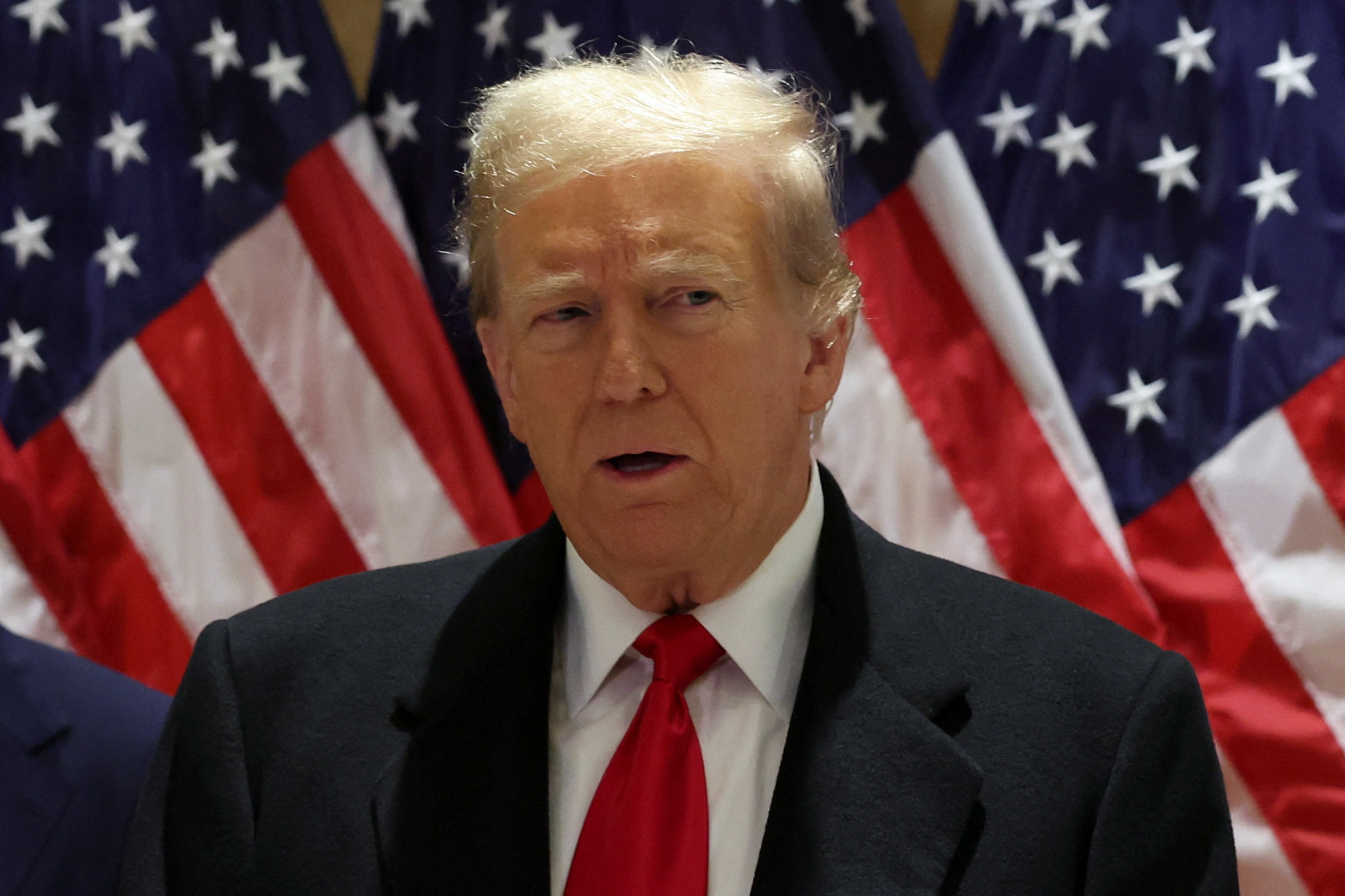
Former President Donald Trump claimed that the hush money trial against him in New York is being rushed and called it "election interference."
“You have a case which … they’re dying to get this thing started. The judge cannot go faster. He wants to get it started so badly," Trump said.
If the trial goes ahead on April 15, it could be the only of Trump’s criminal trials to take place before the November general election. The trial will have begun a year after the charges were filed.
Trump also argued there should not be a trial during the election and attacked his opponent, President Joe Biden.
Please enable JavaScript for a better experience.
Remarks from Chair Jerome H. Powell at the Macroeconomics and Monetary Policy Conference
Friday, Mar 29, 2024
8:30 am PDT
Federal Reserve Bank of San Francisco San Francisco, CA
Federal Reserve Chair Jerome H. Powell speaks at the Macroeconomics and Monetary Policy Conference in a conversation moderated by Kai Ryssdal of Marketplace.
The conversation will be livestreamed and also will be made available as a recording after the event.
Stay in the know
Sign up for notifications on speeches, remarks, and fireside chats from the SF Fed.
About the speaker.

Jerome H. Powell first took office as Chair of the Board of Governors of the Federal Reserve System on February 5, 2018, for a four-year term. He was reappointed to the office and sworn in for a second four-year term on May 23, 2022. Mr. Powell also serves as Chairman of the Federal Open Market Committee, the System’s principal monetary policymaking body. Mr. Powell has served as a member of the Board of Governors since taking office on May 25, 2012, to fill an unexpired term. He was reappointed to the Board and sworn in on June 16, 2014, for a term ending January 31, 2028. Read Jerome H. Powell’s full bio .

SPEECHES : mary c. daly’s speeches
Price Stability Built to Last

Macroeconomics and Monetary Policy Conference

Panel Discussion on AI and the Labor Market
We've detected unusual activity from your computer network
To continue, please click the box below to let us know you're not a robot.
Why did this happen?
Please make sure your browser supports JavaScript and cookies and that you are not blocking them from loading. For more information you can review our Terms of Service and Cookie Policy .
For inquiries related to this message please contact our support team and provide the reference ID below.
- CBSSports.com
- Fanatics Sportsbook
- CBS Sports Home
- NCAA Tournament
- W. Tournament
- Champions League
- Motor Sports
- High School
- Horse Racing
Men's Brackets
Women's Brackets
Fantasy Baseball
Fantasy football, football pick'em, college pick'em, fantasy basketball, fantasy hockey, franchise games, 24/7 sports news network.
- CBS Sports Golazo Network
- March Madness Live
- PGA Tour on CBS
- UEFA Champions League
- UEFA Europa League
- Italian Serie A
- Watch CBS Sports Network
- TV Shows & Listings
The Early Edge
A Daily SportsLine Betting Podcast
With the First Pick
NFL Draft is coming up!
- Podcasts Home
- Eye On College Basketball
- The First Cut Golf
- NFL Pick Six
- Cover 3 College Football
- Fantasy Football Today
- Morning Kombat
- My Teams Organize / See All Teams Help Account Settings Log Out
College football spring games 2024: Schedule, TV, live streams, start times, dates for Power Four conferences
Bookmark this handy schedule for all power four spring games ahead of the 2024 college football season.
Spring games are right around the corner, and these scrimmages will give college football fans a first glimpse at what will be a completely different landscape. Waves of change will be implemented during the 2024 season: The College Football Playoff is expanding to 12 teams with a new auto-bid structure surrounding conference champions, the Pac-12 is operating with just two teams and the remaining power conferences -- the SEC, Big Ten, ACC and Big 12 -- will each be introducing new members.
More than 40 programs have officially announced dates and times for spring games, while each conference has placed the majority of television and streaming options to watch. As it stands, Alabama is the only team in the country to place its spring game on basic cable, but for good reason because it'll be a fascinating one to watch. Following the retirement of legendary coach Nick Saban, Kalen DeBoer will lead his Crimson Tide squad onto the field for the first time on ESPN.
The Big Ten's spring games will air on Big Ten Network, while the Big 12, ACC and SEC will all show up on ESPN streaming. It should also be noted that the Pac-12's dissolution does not go into effect until July, so the conference still stands at 12 member institutions throughout the spring. As such, Pac-12 spring games will be aired on the Pac-12 Network -- potentially for the last time ever.
You can view all the Power Four spring game dates and times below. For convenience, schools have been grouped into the conference in which they'll be competing in the 2024 season. So, for example, USC and UCLA are included with the Big Ten schools.
This article will be updated as more programs announce dates.
Our Latest College Football Stories
Revisiting the Alabama vs. Clemson CFP rivalry
Will backus • 4 min read.
One question for each ACC football team this spring
Chip patterson • 13 min read.
NCAA not ready to outlaw hip-drop tackles like NFL
Dennis dodd • 2 min read.
16 teams in best position to make expanded CFP
Will backus • 10 min read.
Spring questions for each Big Ten team
Tom fornelli • 16 min read.
NCAA president takes aim at college prop bets
Shehan jeyarajah • 1 min read, share video.
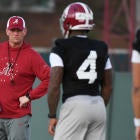
2024 college football spring game schedule

Teams poised to make expanded CFP

Will Lewis go from scapegoat to savior?

Quarterback battles to watch this spring

Washington to poach Chun from Wazzu as next AD

Exiting Notre Dame AD talks college sports' future

OSU, WSU settle with departing Pac-12 members
NCAA Tournament Sweet 16 bracket: Everything to know as men's March Madness heats up

How sweet it is for 16 teams left in the 2024 men's NCAA Tournament .
March Madness is hitting its fever pitch, as the 68-team field has been dwindled to just 16. The 2024 Sweet 16 gets underway Thursday, and there's a bit of conference diversity happening among the field — with a small twist.
Of the remaining teams, four squads are members of the ACC, the most of any conference left in the field. The Big East follows with three teams left in the fold, while several other conferences are represented with at least one squad.
While some expected the ACC to flounder once the tournament got underway, it's no surprise to see some of the conference stalwarts keep dancing as the calendar nears April. Well, that's what makes it "madness," right?
Here's what to know about the Sweet 16, the conferences and how you can watch more chaos unfold come Thursday:
FOLLOW THE MADNESS: NCAA basketball bracket, scores, schedules, teams and more.
Who is in the Sweet 16?
Here's who'll be playing to punch their ticket to the Elite Eight starting Thursday:
- (1) Connecticut
- (1) North Carolina
- (1) Houston
- (2) Iowa State
- (2) Arizona
- (2) Marquette
- (2) Tennessee
- (3) Illinois
- (3) Creighton
- (4) Alabama
- (5) San Diego State
- (5) Gonzaga
- (6) Clemson
- (11) North Carolina State
Sweet 16 bracket
Here's who will tip off starting March 28:
Thursday, March 28:
- (6) Clemson vs. (2) Arizona
- (5) San Diego State vs. (1) Connecticut
- (4) Alabama vs. (1) North Carolina
- (3) Illinois vs. (2) Iowa State
Friday, March 29
- (11) North Carolina State vs. (2) Marquette
- (5) Gonzaga vs. (1) Purdue
- (4) Duke vs. (1) Houston
- (3) Creighton vs. (2) Tennessee
As for the Elite Eight matchups, here's how they would break down:
- (1) Connecticut OR (5) San Diego State vs. (3) Illinois OR (2) Iowa State (East final)
- (1) North Carolina OR (4) Alabama vs. (6) Clemson OR (2) Arizona (West final)
- (1) Houston OR (4) Duke vs. (11) North Carolina State OR (2) Marquette (South final)
- (1) Purdue OR (5) Gonzaga vs. (3) Creighton OR (2) Tennessee
Sweet 16 teams by conference
Of the remaining teams, four belong to the ACC, three to the Big East, two to the Big Ten, two to the Big 12, two to the SEC, one to the Pac-12, one to the West Coast Conference and one to the Mountain West.
Here's a quick rundown of the remaining quads in the 2024 NCAA Tournament and which conference they represent:
- (1) Connecticut : Big East
- (1) North Carolina : ACC
- (1) Houston : Big 12
- (1) Purdue : Big Ten
- (2) Iowa State : Big 12
- (2) Arizona : Pac-12
- (2) Marquette : Big East
- (2) Tennessee : SEC
- (3) Illinois : Big Ten
- (3) Creighton : Big East
- (4) Alabama : SEC
- (4) Duke : ACC
- (5) San Diego State : Mountain West
- (5) Gonzaga : West Coast
- (6) Clemson : ACC
- (11) North Carolina State : ACC
Sweet 16 streaming and TV schedule
Here's how you can catch the Sweet 16 starting Thursday night (all times Eastern):
- (6) Clemson vs. (2) Arizona | 7:09 p.m. | CBS (TV) | Fubo (Live stream)
- (5) San Diego State vs. (1) Connecticut | 7:39 p.m. | TBS (TV) | Sling TV (Live stream)
- (4) Alabama vs. (1) North Carolina | 9:39 p.m. | CBS (TV) | Fubo (Live stream)
- (3) Illinois vs. (2) Iowa State | 10:09 p.m. | TBS (TV) | Sling TV (Live stream)
- (11) North Carolina State vs. (2) Marquette | 7:09 p.m. | CBS (TV) | Fubo (Live stream)
- (5) Gonzaga vs. (1) Purdue | 7:39 p.m. | TBS (TV) | Sling TV (Live stream)
- (4) Duke vs. (1) Houston | 9:39 p.m. | CBS (TV) | Fubo (Live stream)
- (3) Creighton vs. (2) Tennessee | 10:09 p.m. | TBS | Sling TV

Joe Biden Sparks Fury by Touting Transgender Visibility Day on Easter
P resident Joe Biden sparked fury among conservatives on social media on Saturday after he proclaimed Sunday, March 31, which happens to be the day Easter falls on this year, Transgender Day of Visibility.
The International Transgender Day of Visibility was created on March 31, 2009, and has continued to be celebrated every March 31 for more than a decade. The day is meant to not only honor transgender people, but raise awareness of the discrimination they continue to face .
Easter usually falls between March 22 and April 25 every year. The holiday is celebrated on the first Sunday after the full moon on or following the spring equinox.
On Friday, the White House sent out an announcement proclaiming March 31, 2024, as Transgender Day of Visibility. This announcement is just a formality as the date of this annual event has already been set and is a way for the Biden administration to celebrate the holiday.
In the announcement, Biden wrote, "Today, we send a message to all transgender Americans: You are loved. You are heard. You are understood. You belong. You are America, and my entire Administration and I have your back."
Meanwhile, former President Donald Trump 's national press secretary, Karoline Leavitt, called it "appalling and insulting" that Biden "formally proclaimed Easter Sunday as 'Trans Day of Visibility'" in a statement on Saturday. Leavitt said the president's announcement is an example of his administration's "years-long assault on the Christian faith."
"We call on Joe Biden's failing campaign and White House to issue an apology to the millions of Catholics and Christians across America who believe tomorrow is for one celebration only—the resurrection of Jesus Christ," she added.
Journalist Aaron Rupar, fought back against Trump's statement, writing on X, formerly Twitter: "Cloaking yourself in Christianity to spread bigotry and attack marginalized communities is some twisted s***."
Trump's eldest son, Donald Trump Jr., wrote on X: "This is the left's new religion. They want people worshiping the trans flag instead of God. They must be stopped."
"The Biden White House has betrayed the central tenet of Easter — which is the resurrection of Jesus Christ," House Speaker Mike Johnson , a Louisiana Republican , posted. "Banning sacred truth and tradition—while at the same time proclaiming Easter Sunday as 'Transgender Day'—is outrageous and abhorrent. The American people are taking note."
In response to the criticism, White House deputy press secretary Andrew Bates told Newsweek via email on Saturday afternoon: "As a Christian who celebrates Easter with family, President Biden stands for bringing people together and upholding the dignity and freedoms of every American. Sadly, it's unsurprising politicians are seeking to divide and weaken our country with cruel, hateful, and dishonest rhetoric. President Biden will never abuse his faith for political purposes or for profit."
Also responding to Biden's announcement, Charlie Kirk, founder and CEO of conservative group Turning Point USA , wrote on X, "Joe Biden just proclaimed Easter Sunday a 'Transgender Day of Visibility.' Yes, he really just did that. If you're offended, that's the point."
Conservative political commentator Benny Johnson posted: "Joe Biden has declared Easter Sunday 'Transgender Day of Visibility' What a slap in the face to all Christians in America..."
"America has been hijacked by lunatics," wrote Abe Hamadeh, a Trump-endorsed Republican candidate for Congress in Arizona.
Sara Gonzales, who hosts a show on conservative outlet Blaze Media, posted to X: "Joe Biden proclaims Easter Sunday as 'Transgender Day of Visibility.' As I have said, this is no longer left versus right. This is good versus evil. It has never been more clear."
Steve Bannon, far-right media personality and former White House chief strategist in the Trump administration, wrote on conservative social media site Gettr, in response to Biden's announcement: "5 November 2024 Begins the Process of the Restoration of Decency @ 1600 Pennsylvania Avenue."
November 5, 2024, is the date of this year's presidential election, which will likely be between Biden, the Democratic incumbent, and Trump, the presumed GOP presidential nominee.
Newsweek reached out to the White House via email for comment.
Biden, who is a Catholic, has championed LGBTQ+ rights while in office, which he wrote about in his Transgender Visibility Day announcement.
"I am proud to have appointed transgender leaders to my Administration and to have ended the ban on transgender Americans serving openly in our military," the president wrote. "I am proud to have signed historic Executive Orders that strengthen civil rights protections in housing, employment, health care, education, the justice system, and more. I am proud to have signed the Respect for Marriage Act into law, ensuring that every American can marry the person they love."
However, he admitted "there is much more to do" and called on Congress to pass the Equality Act, which would "codify civil rights protections for all LGBTQI+ Americans."
Biden also condemned anti-trans youth laws proposed by "extremists" and bullying and discrimination of transgender people, calling it "un-American" and demanding that it "must end."
In 2023, at least 510 anti-LGBTQ+ bills were introduced in state legislatures across the country, according to the American Civil Liberties Union (ACLU).
"It is no surprise that the bullying and discrimination that transgender Americans face is worsening our Nation's mental health crisis, leading half of transgender youth to consider suicide in the past year," Biden wrote Friday.
The Biden administration also provides emergency mental health support through the nationwide suicide and crisis lifeline. If you are an LGBTQ+ youth in need of help, call "988" and press "3" to speak with a trained counselor.
Meanwhile, the White House will host its annual Easter Egg Roll on Monday, which will be filled with fun educational activities for children. The Easter Egg Roll dates back to 1878 when then-President Rutherford B. Hayes announced that children were allowed to roll Easter eggs at the White House after Congress made such activities illegal on U.S. Capitol grounds in 1876.
Update 3/30/24, 3:14 p.m. ET: This article has been updated with additional information.
Update 3/30/24, 3:59 p.m. ET: This article has been updated with additional information.
Update 3/30/24, 5:59 p.m. ET: This article has been updated with comment from the White House.
Update 3/20/24, 7:08 p.m. ET: The headline has been updated.
Related Articles
- Donald Trump Has Desire to 'Cuddle' Putin, Former Aide Warns
- Caitlyn Jenner Reacts to Joe Biden Recognizing Transgender Day on Easter
- Republican Admits Impeachment Probe Hasn't Found Any Crime by Joe Biden
- Exclusive: Republican LGBT Group Reacts to Biden's Transgender Day Message
Start your unlimited Newsweek trial
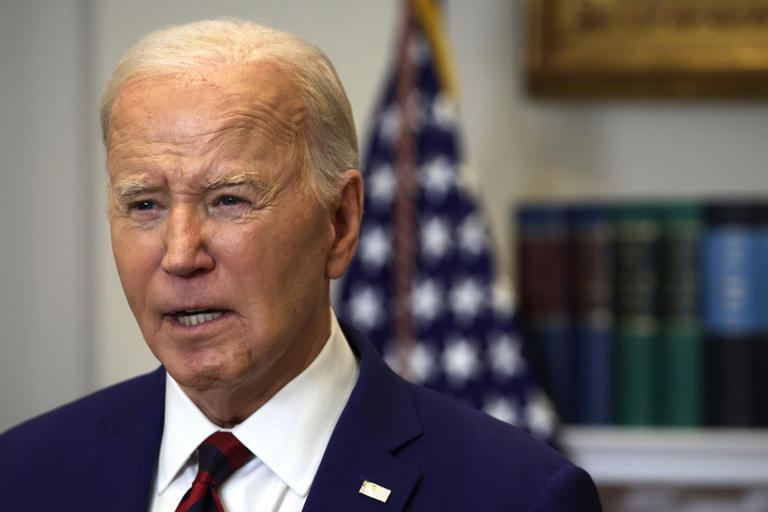

IMAGES
VIDEO
COMMENTS
Start with a warm welcome. As alluded before, this can range from very formal ("Good morning to all attendees") to informal ("Hello and welcome, everyone!"). These will be your first words, so you need to grab everyone's attention—use a clear, strong voice. A smile goes a long way to make everyone feel welcome and in a good mood.
1) Thank the Organizers and Audience. You can start by thanking the audience for coming and thanking the organization for inviting you to speak. Refer to the person who introduced you or to one or more of the senior people in the organization in the audience. This compliments them, makes them feel proud and happy about your presence, and ...
Defining Speech. Speech is a way of expressing or communicating your ideas and thoughts through spoken words. A dialect that individuals speak. A public discourse between people who communicate their opinions to each other or to an audience.. Defining Conference. A conference is an important meeting between members of a company or an organization.
In your notes or outline, you'll want to include the following steps: Welcome the audience - use a clear and strong voice to welcome all attendees and grab their attention. an example of an informal greeting: "Hello and welcome, everyone!". an example of a formal greeting: "Good evening to all attendees.
Analyze their response and tweak the joke accordingly if necessary. Starting your speech with humour means your setting the tone of your speech. It would make sense to have a few more jokes sprinkled around the rest of the speech as well as the audience might be expecting the same from you. 4. Mohammed Qahtani.
Opening Line: "All right. I'm going to show you a couple of images from a very diverting paper in The Journal of Ultrasound in Medicine.". #6: Julian Treasure - "How to Speak so that People Want to Listen". Opening Line: "The human voice: It's the instrument we all play.". #7: Jill Bolte Taylor - "My Stroke of Insight".
There are six common or standard content items in a good welcome speech. These are: Greetings to welcome everyone and thanking them for coming along. Acknowledgement of special guests, if there are any. An introduction of the event itself and a brief overview of special highlights the audience will want to know about.
Ask a question they can respond to or tell a joke — anything to connect with the audience. Do something that grabs their attention and excites them and makes them thrilled about the event. 3. Add individual greetings for any special guests. Include the names of special guests that are part of the audience.
Life-saver #3: Don't start on the computer. Start drafting the key message, the structure, and the details of your talk on a sheet of paper, or better yet, with a set of sticky notes. This is far more flexible and effective than starting on Powerpoint or similar software and filling in slides right away.
4 Practice your delivery. The way you deliver your conference speech can make or break its impact. To practice your delivery, you need to focus on three aspects: voice, body, and timing. Voice is ...
Materials should be read aloud; silently won't help at all. Practice standing correctly, going through the walk-on, the opening of books, turning pages, looking up at the audience, smiling, even cracking a joke at an intended interval. On the stage, many things can go wrong, from an electricity outage to dropping the lecture notes on the floor.
4. Be Audible and Clear. Your efforts will only be worthwhile if your speech is audible and clear to the audience. You, as a speaker, should be confident, distinct, and transparent while providing your content. Delivering a speech that is audible and clear is important for effective communication and audience engagement.
Here are 26 different techniques for beginning your speech: 1. Use a quote. One method of starting a speech and gaining the audience's attention is to use a famous or relatable quote. This approach can give your audience context for your topic and connect it to something they recognize. For instance, if you plan to give a speech on a political ...
Being a great conference speaker is about understanding the event audience. It will help ensure everyone is on the same page going into developing your talk or presentation. 2. Let Event Organizers Know Early. The early bird definitely gets the worm when it comes to applying for speaking engagements.
1. Advance incrementally. If you want to start speaking at conferences, start by attending smaller industry events. Study how effective speakers at these events treat their subject matter and interact with the audience. When you feel that you're ready to get on the stage yourself, target similarly small events.
2. Starting a speech: First words count. And now onto what you're going to say. First off, avoid starting a speech with lines like: Thank you so much, it's a pleasure to be here. I'm sorry, this isn't going to take very long. I was only asked last week/yesterday/10 minutes ago to do this speech.
Welcome Speech for Conference: The opening speech for a conference normally explains in a brief run-through about the list of events planned for the day against a corresponding timeline. The host discusses the theme and context of the conference in a welcome speech.Speakers and delegates of the events are introduced formally.
Conference Welcome Speech - Sample 2. To our distinguished guests, ladies and gentlemen - A very Warm Welcome! I feel extremely glad to welcome everyone to this much awaited conference as it marks the 10 th yearly group meeting and it gives me immense pleasure to be standing in front of you all, i.e. amongst the most esteemed personalities who have won accolades in their respective fields.
Welcome Speech for Conference: Very good morning to one and all present here, my name is Suraj and I'll be giving the welcome speech for today's conference and kicking off the 3-day event, starting today. In the next five minutes of my welcome speech for conference, I 'll be walking you through what the conference is about, how useful it is for you and what does the future hold for all ...
Speak with appropriate loudness and speed. Consider the audience, place and topic. Use variations in speed, inflexions, and force to enhance your meaning and hold the audience attention. Use your conclusions as an opportunity to summarize the gist of your speech. Do not repeat important points word for word.
In the closing section, provide your final remarks and wrap up the speech. Reiterate your gratitude to the attendees, organizers, and speakers for their contributions. Leave them with a positive and uplifting message that reinforces the significance of their involvement and participation in the conference. Delivering a compelling closing speech ...
1. Tell your audience who you are. Start your presentation by introducing yourself. Along with sharing your name, give your audience some information about your background. Choose details that are relevant to your presentation and help establish you as an expert in your chosen topic. Example: "Good morning.
About Press Copyright Contact us Creators Advertise Developers Terms Privacy Policy & Safety How YouTube works Test new features NFL Sunday Ticket Press Copyright ...
With the hush money trial set to start in April, ... Former President Donald Trump arrives for a press conference at 40 Wall Street after a pre-trial hearing at Manhattan criminal court, on Monday ...
Jerome H. Powell first took office as Chair of the Board of Governors of the Federal Reserve System on February 5, 2018, for a four-year term. He was reappointed to the office and sworn in for a second four-year term on May 23, 2022. Mr. Powell also serves as Chairman of the Federal Open Market Committee, the System's principal monetary policymaking body. Mr. Powell has served as a member of ...
In the post-meeting press conference, Powell echoed remarks he and his colleagues have made over the past couple months, saying that officials want to see more evidence that inflation is coming ...
For convenience, schools have been grouped into the conference in which they'll be competing in the 2024 season. So, for example, USC and UCLA are included with the Big Ten schools.
The 2024 Sweet 16 gets underway Thursday, and there's a bit of conference diversity happening among the field — with a small twist. Of the remaining teams, four squads are members of the ACC ...
Some Republicans, such as House GOP conference chair Elise Stefanik, further alleged the Biden administration supported a ban of religious symbols at White House Easter celebrations this year.
Start your unlimited Newsweek trial. President Joe Biden delivers remarks at the White House on March 26, 2024, in Washington, DC. ...